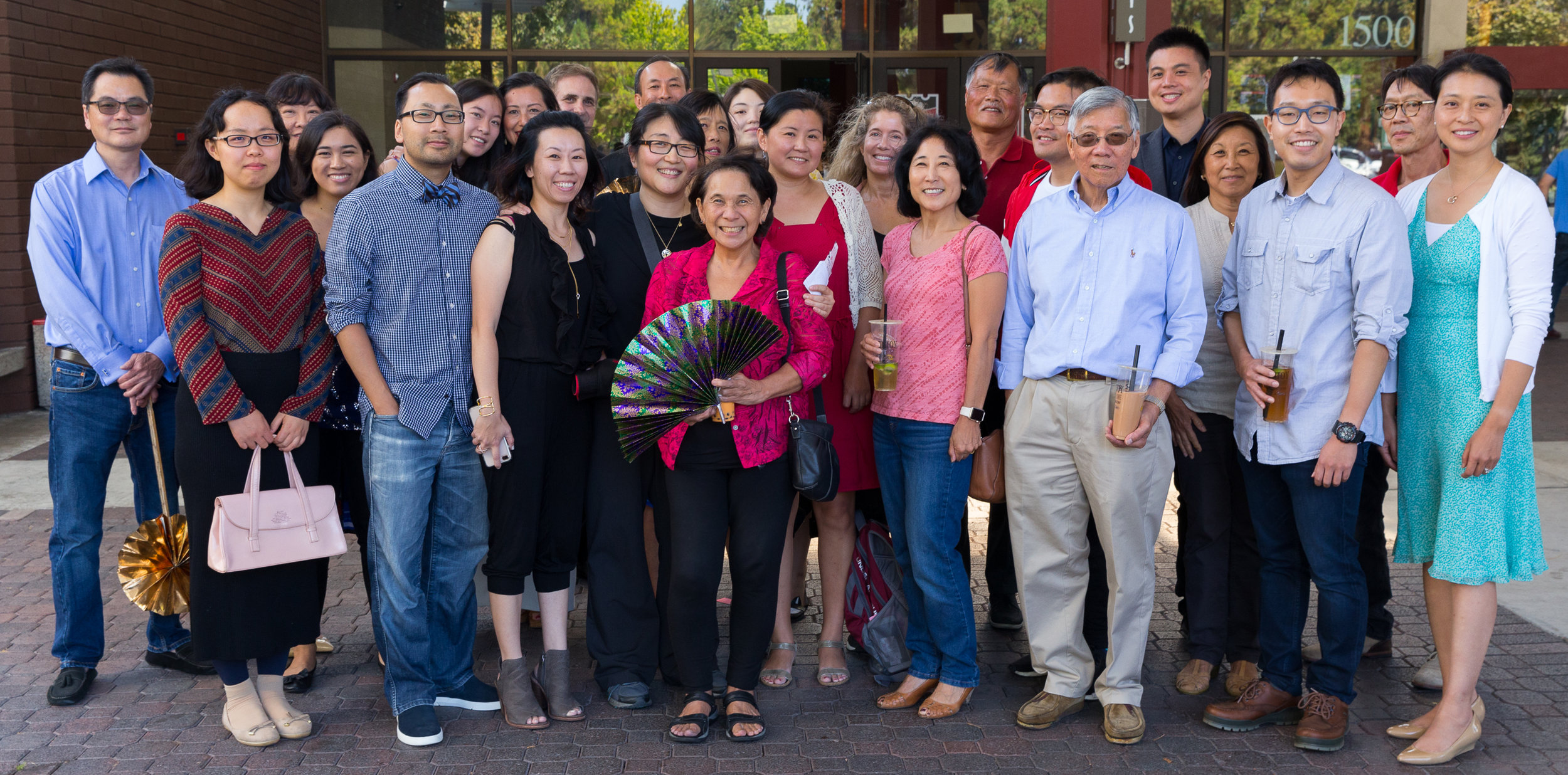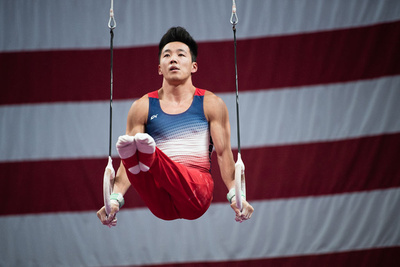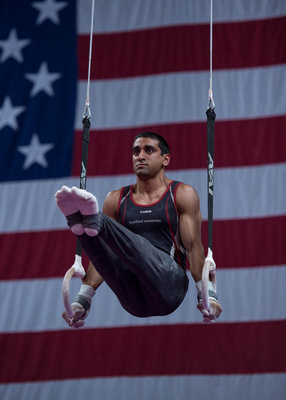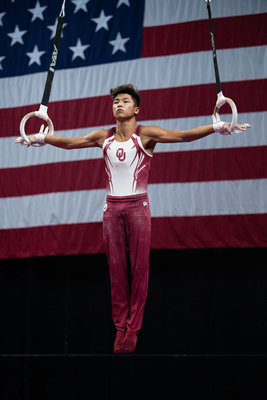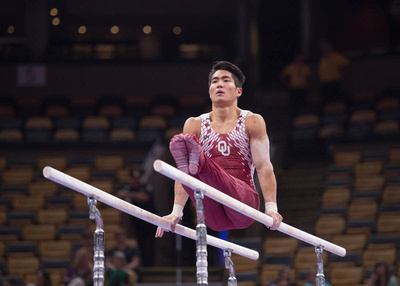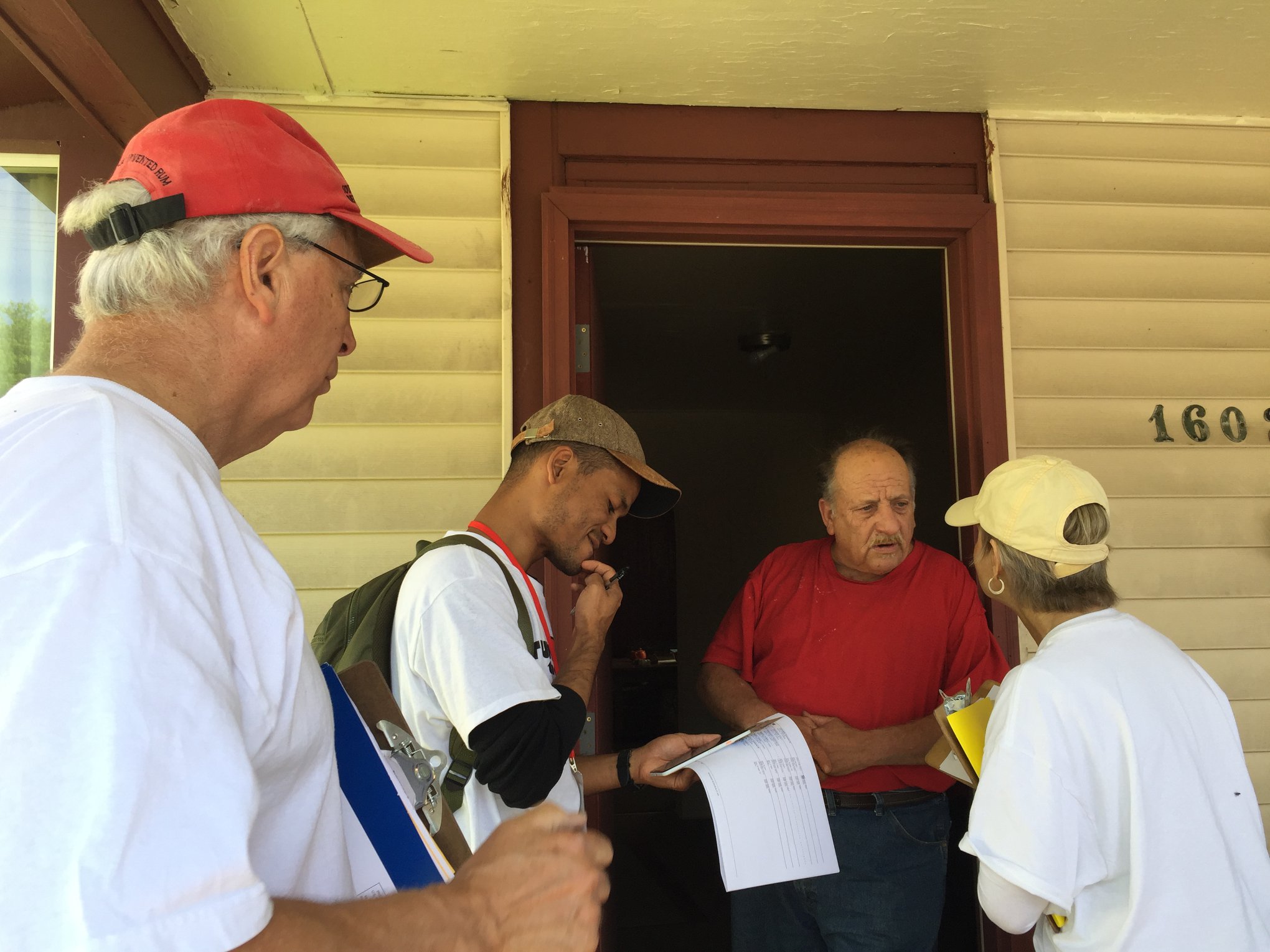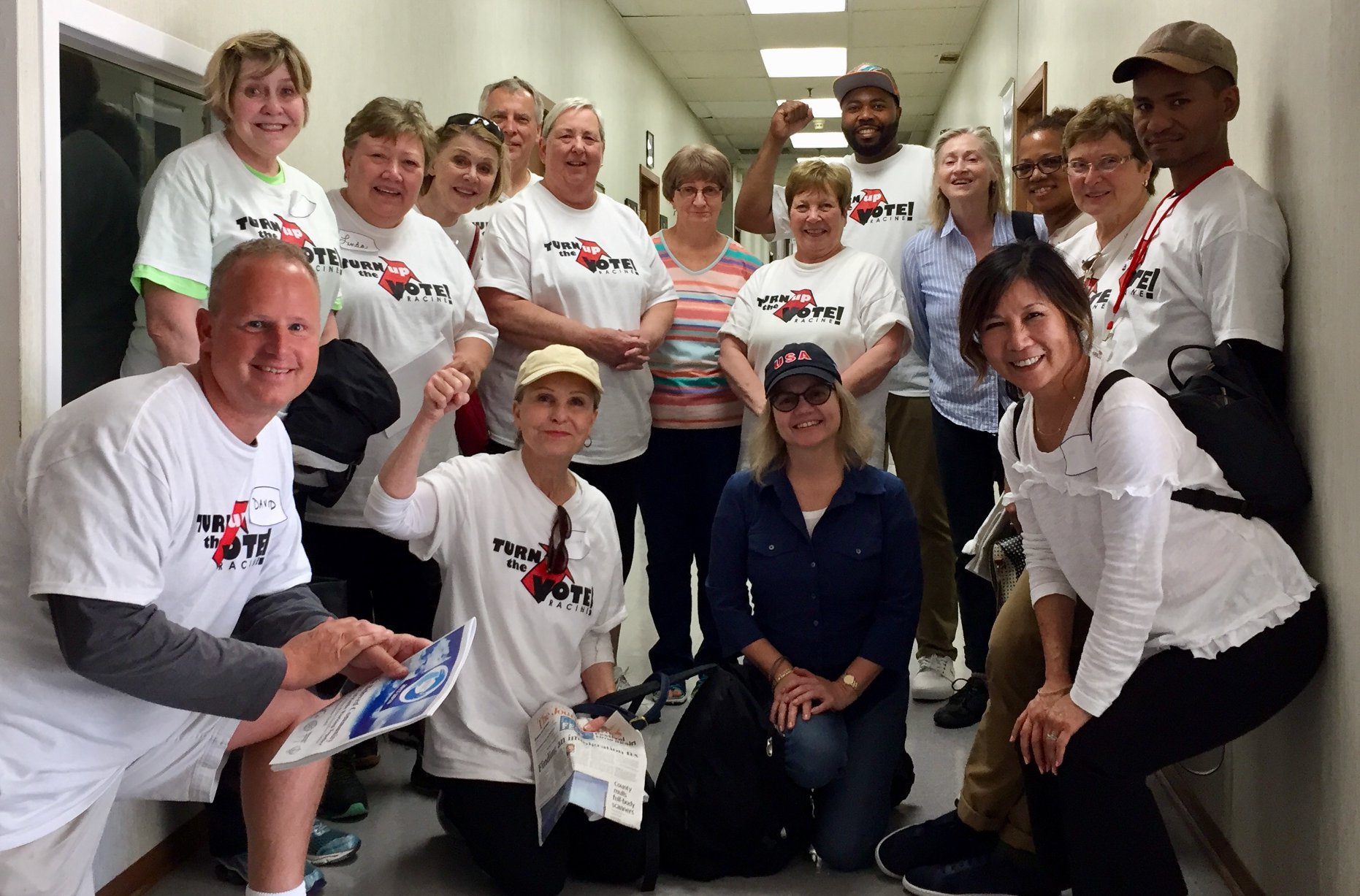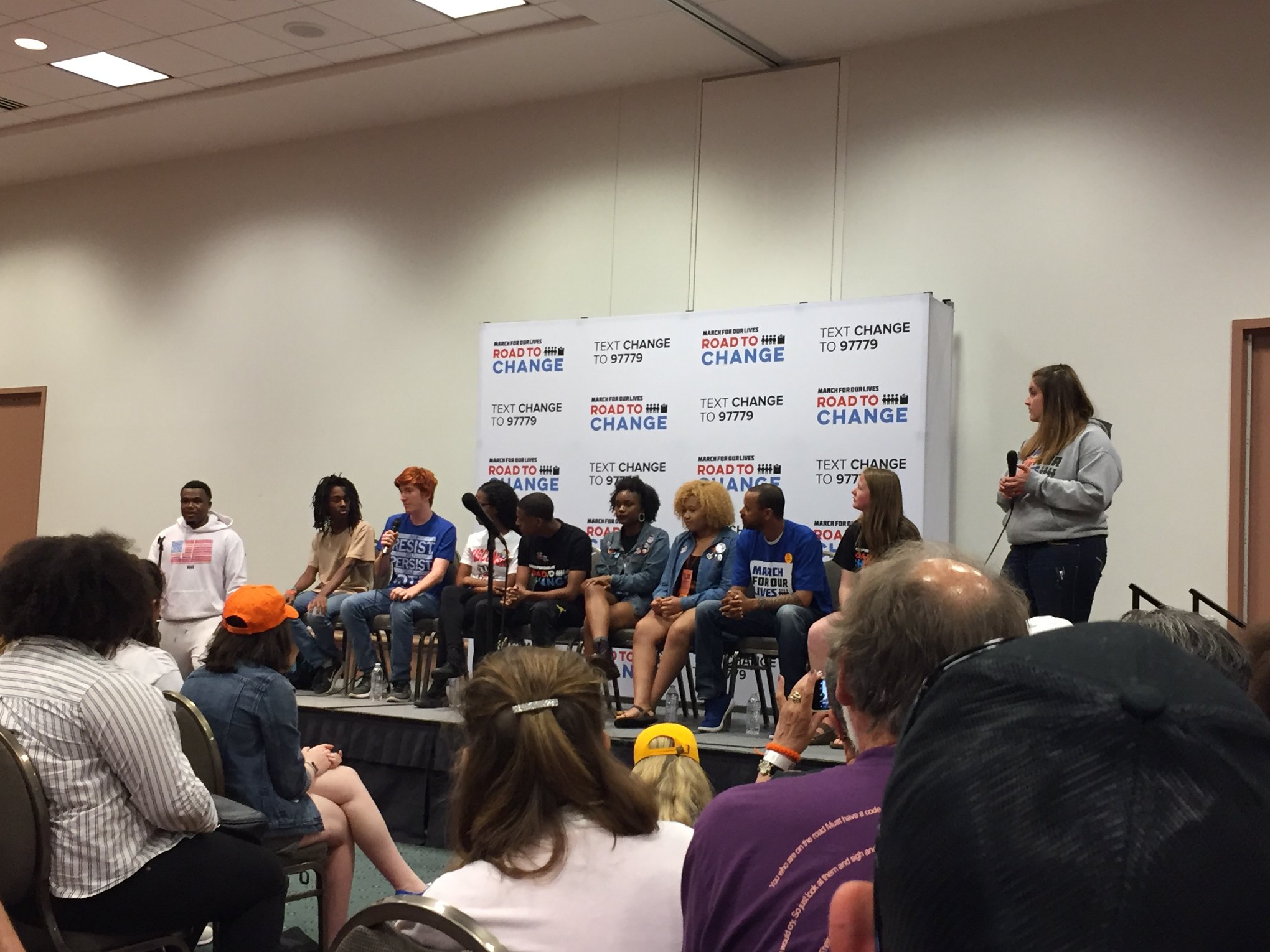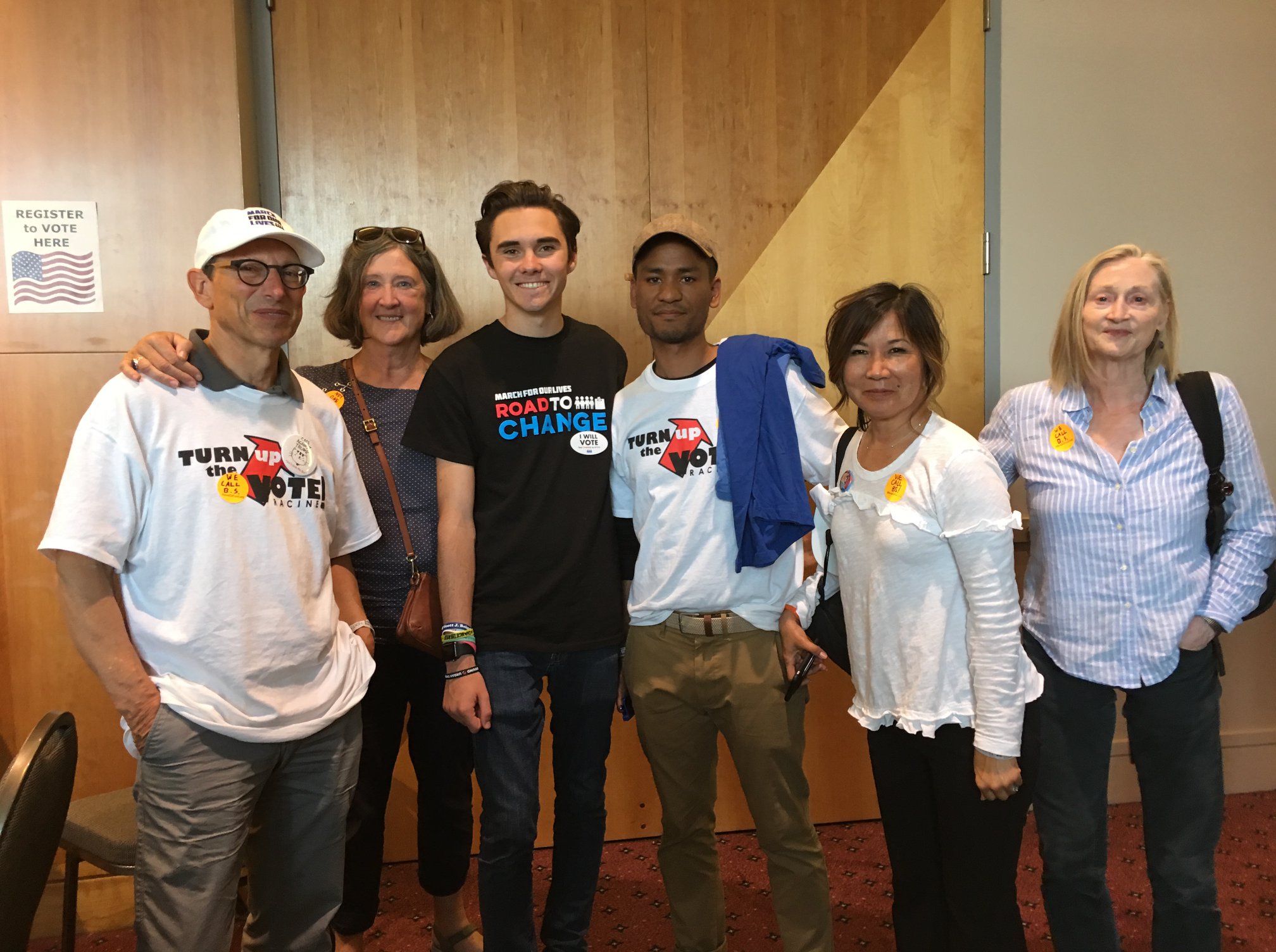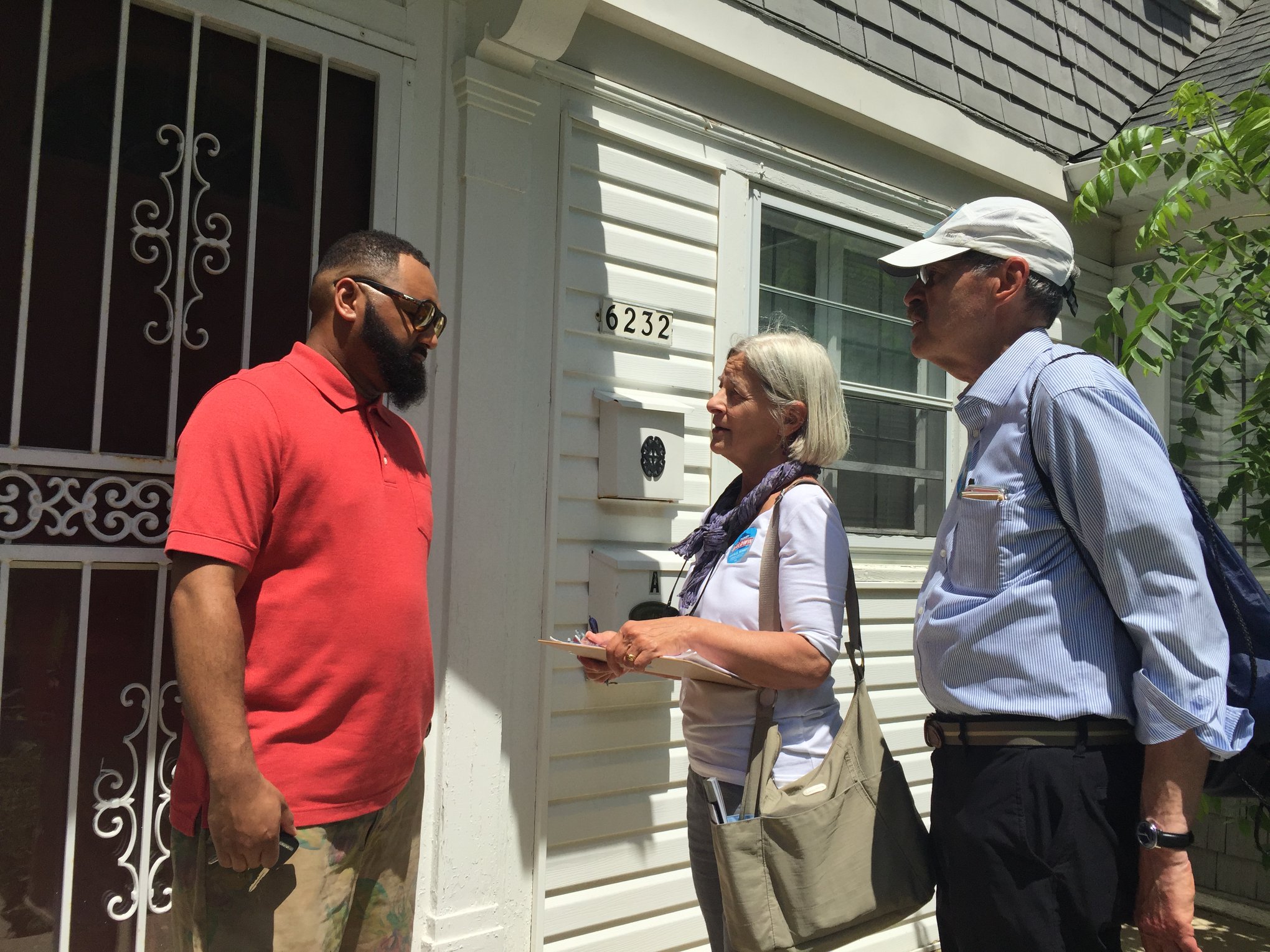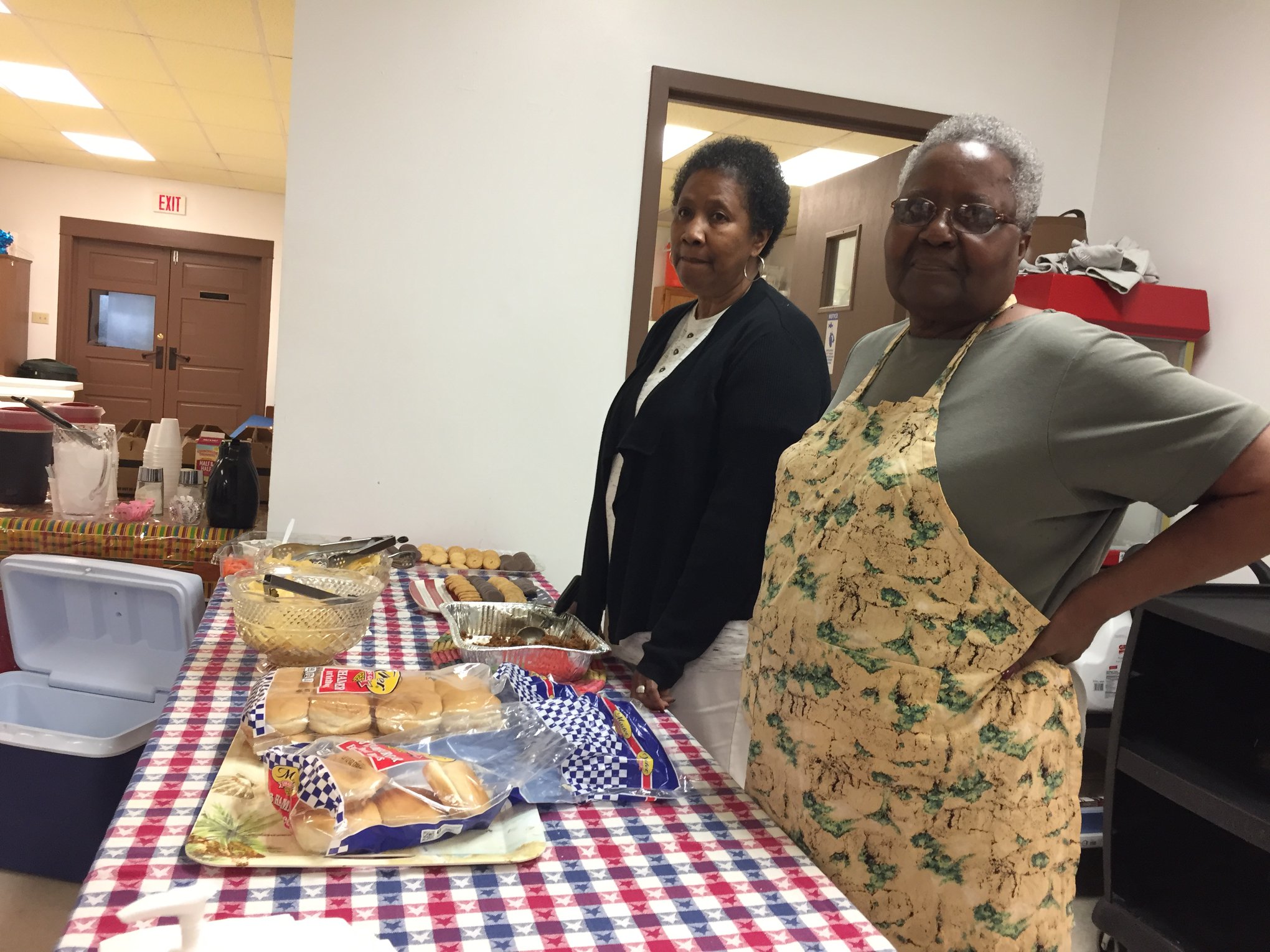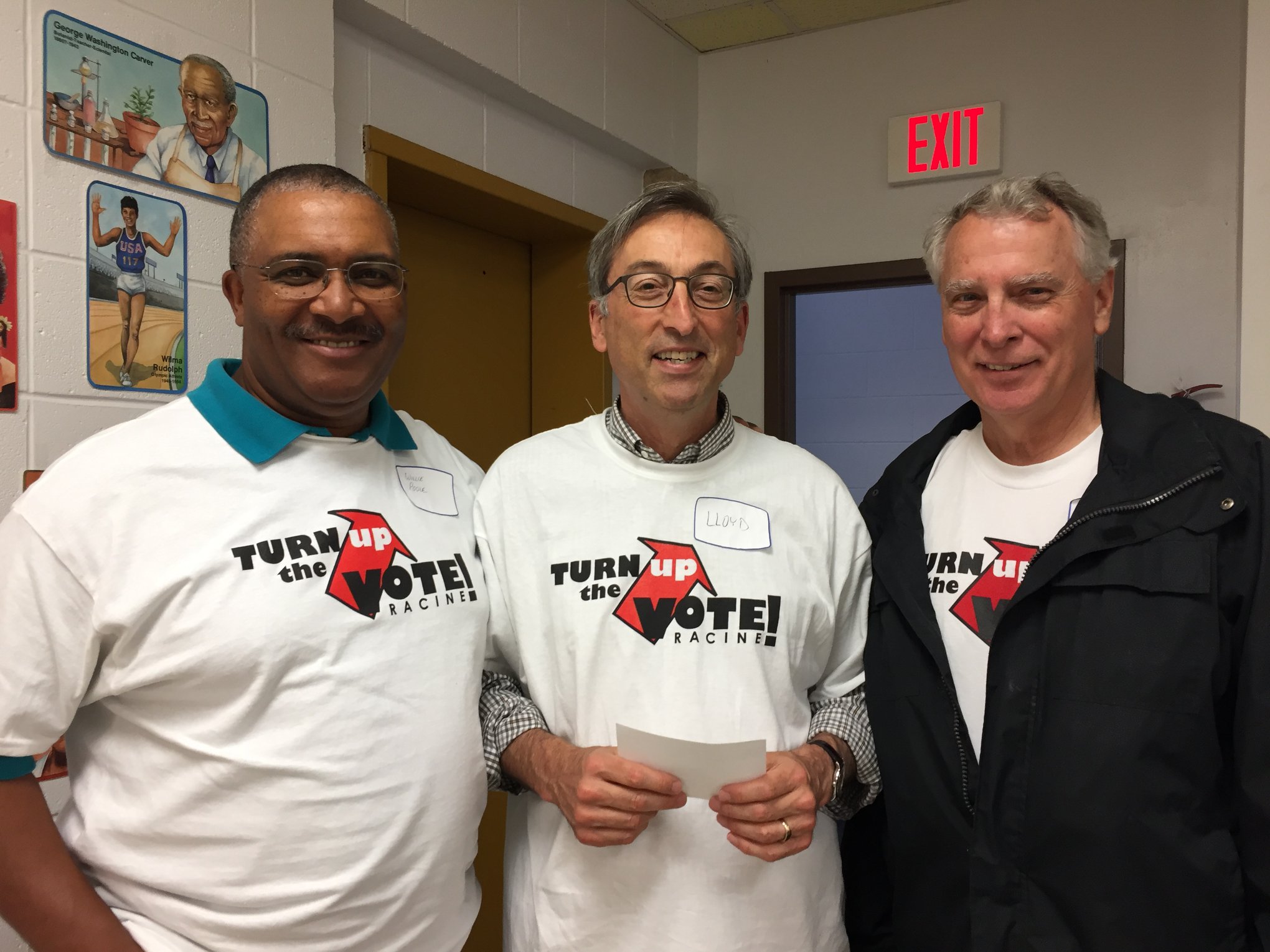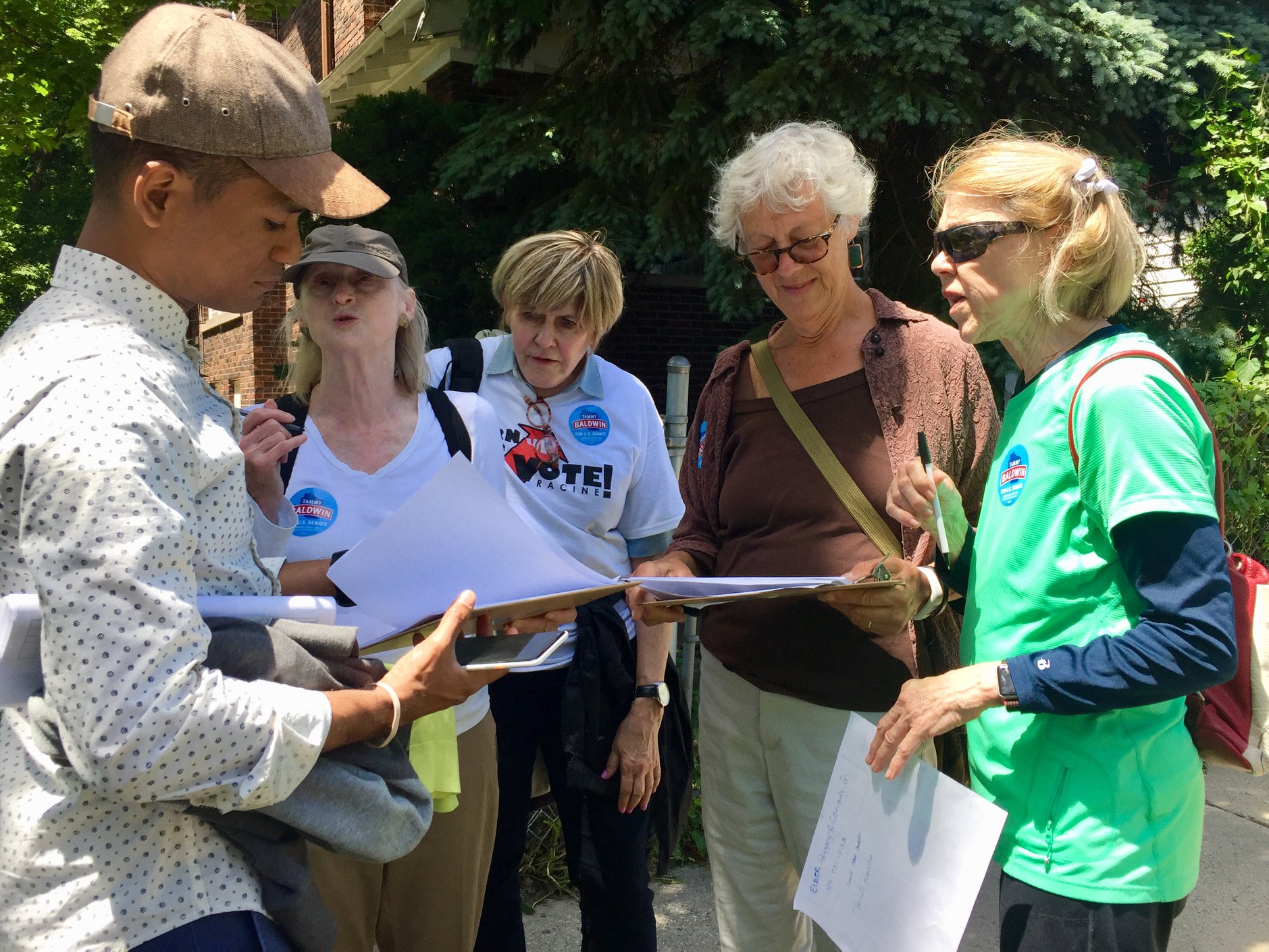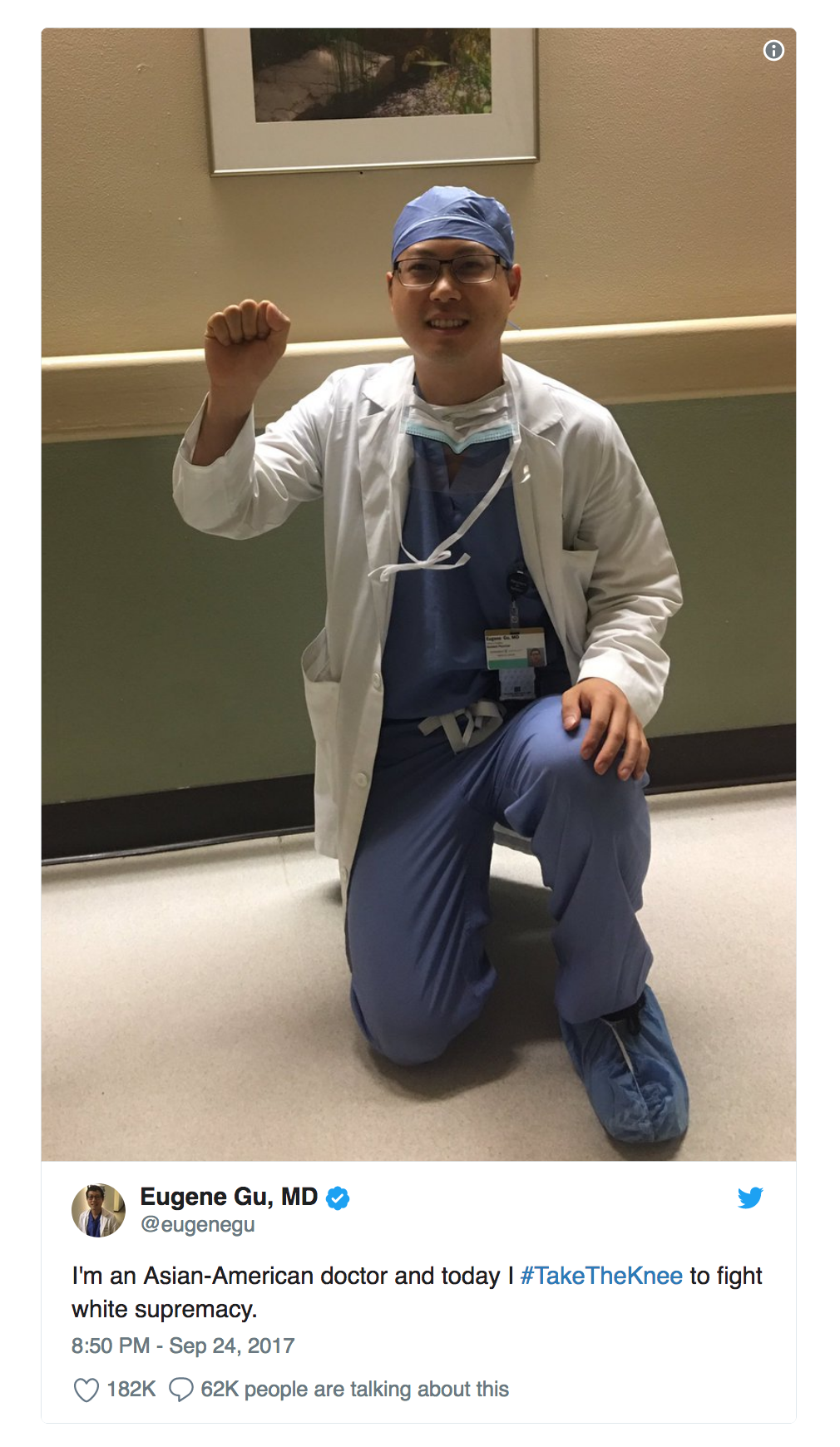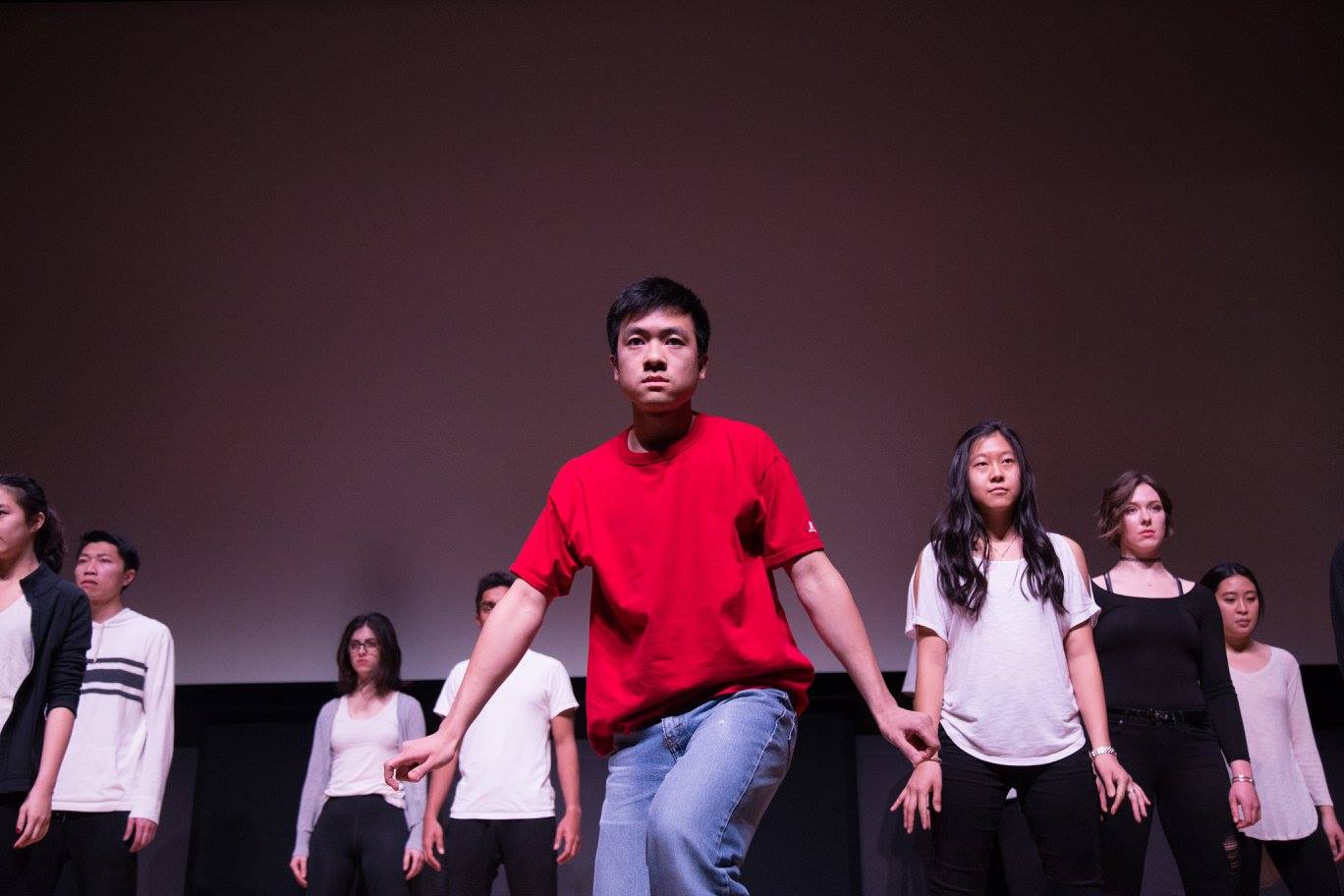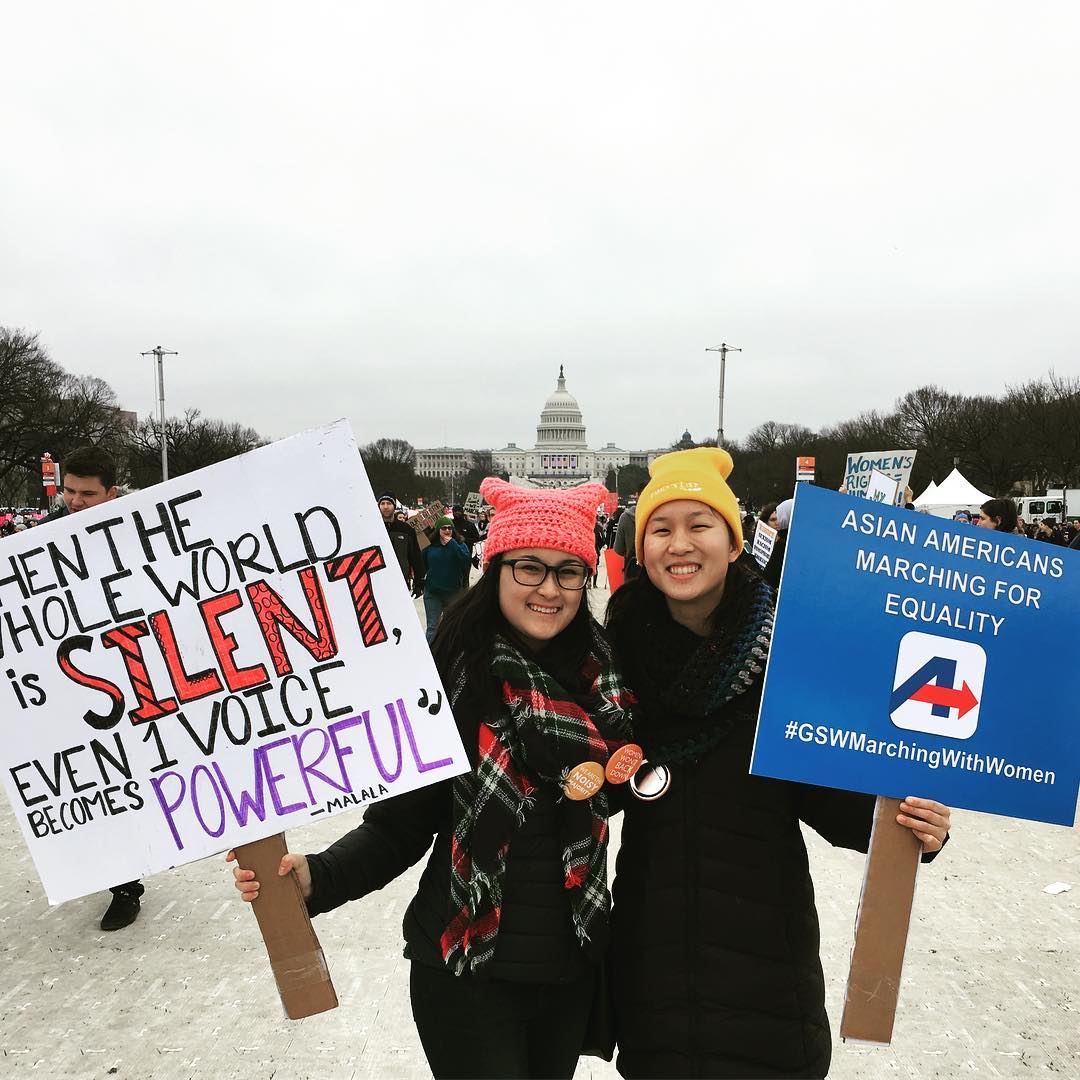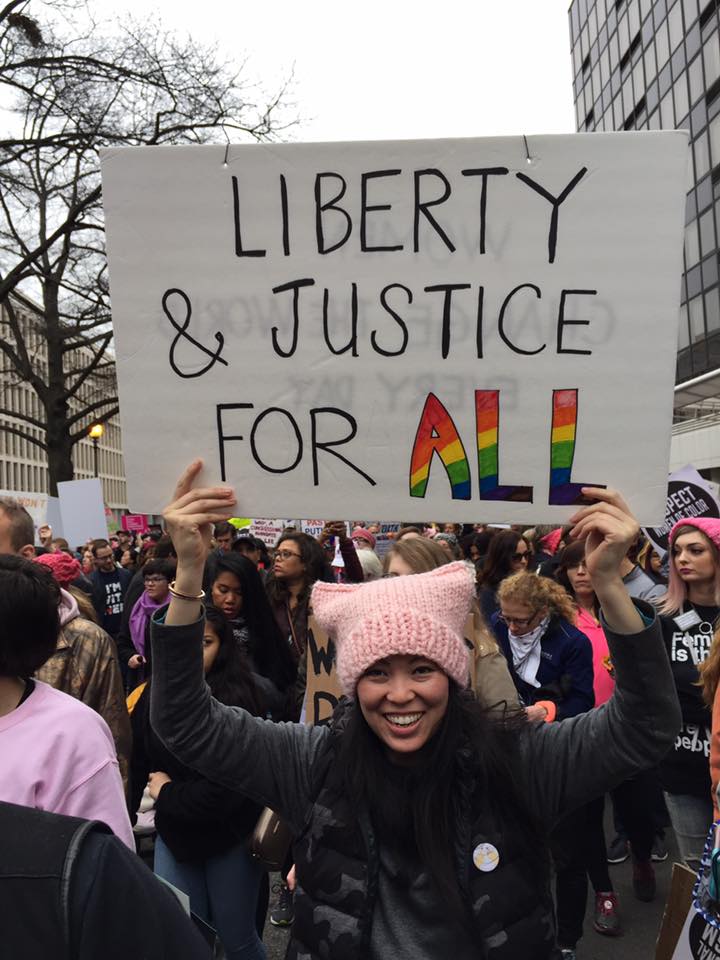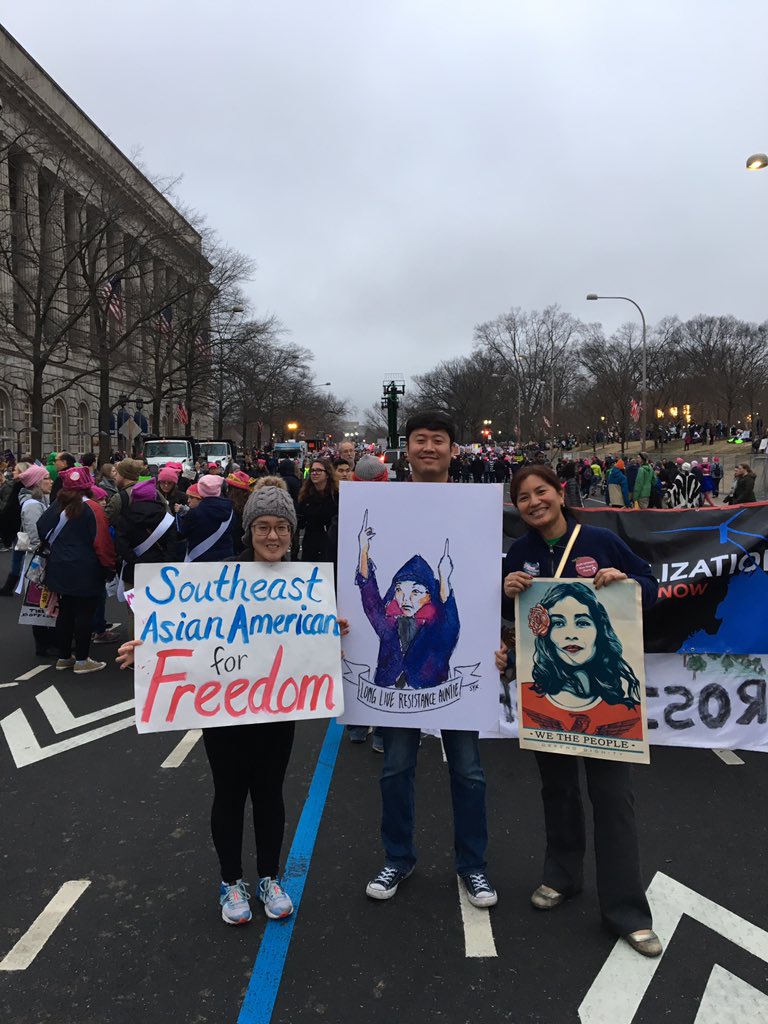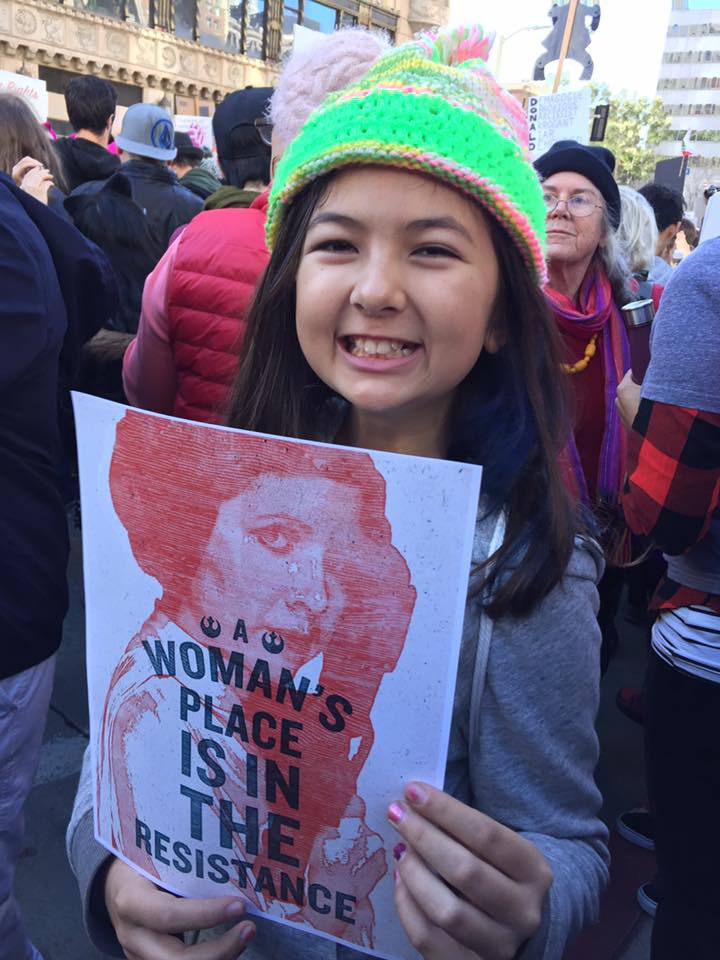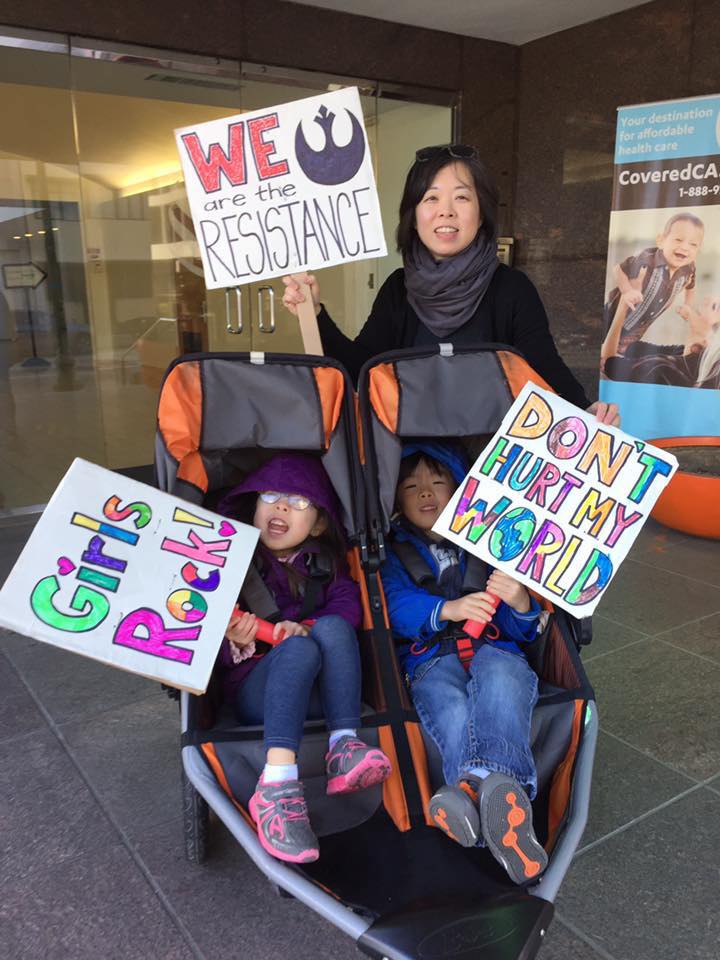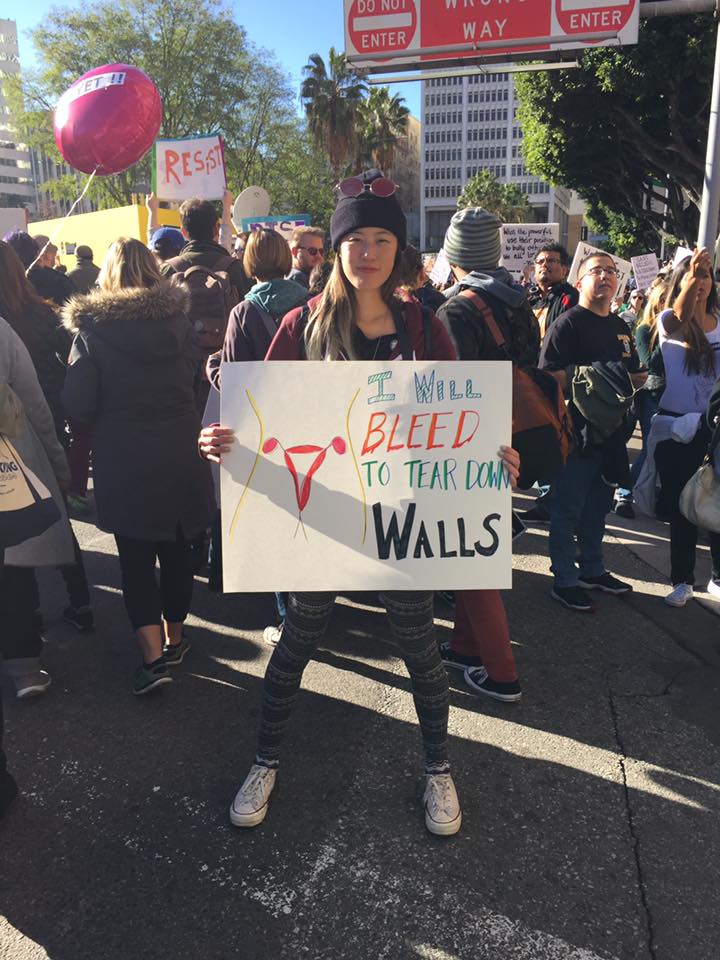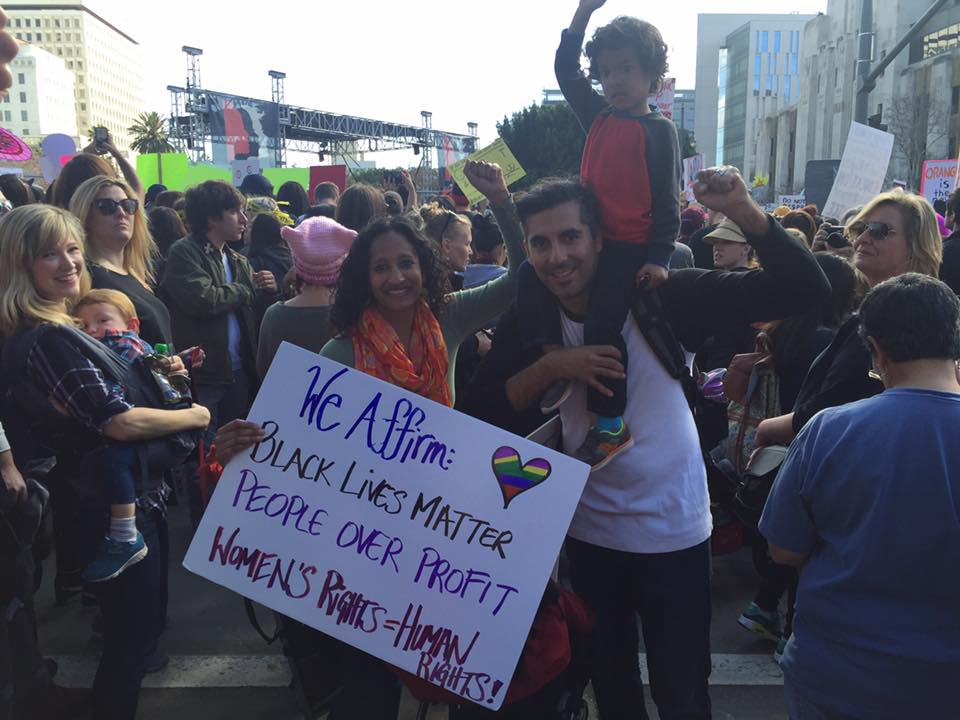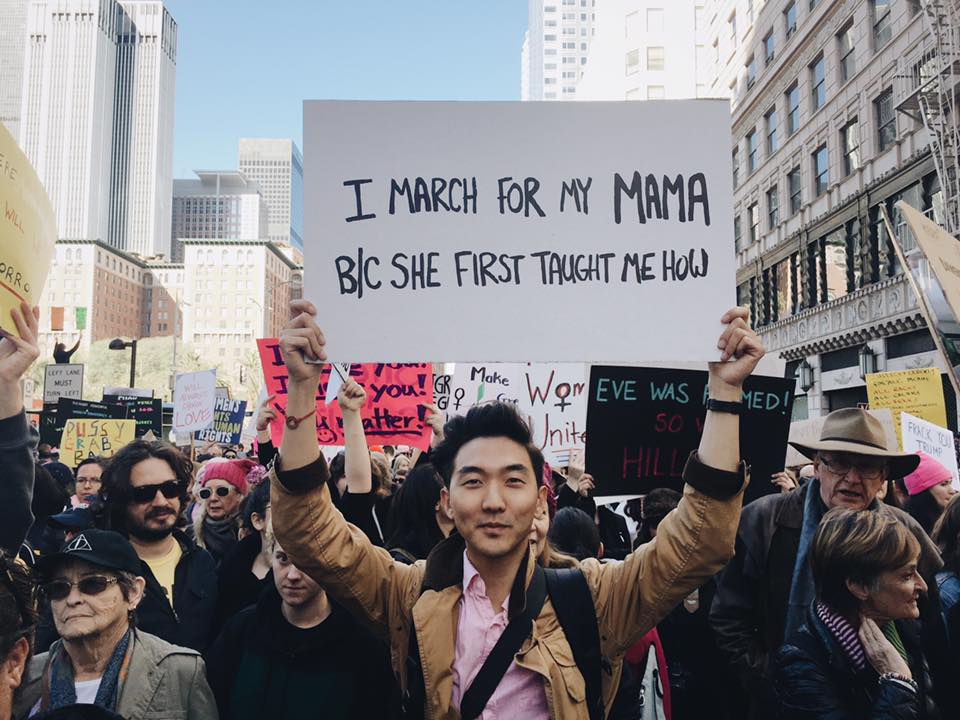The California legislature passed a resolution formally apologizing for the state’s role in imprisoning Japanese Americans during World War II. Under order of President Franklin D. Roosevelt in February 1942, the U.S. government forced more than 120,000 people of Japanese ancestry into ten camps across the Western states.
Read moreOpen Letter to a Burned-Out Intern
Dr. Sonia Singh ‘08, a physician and Stanford alumna, has written a letter to young doctors joining a profession with a hectic schedule, grueling work hours, and patients’ lives on the line—all of which can contribute to a feeling of burnout.
Read moreMD alumna rallies 150 doctors in support of social justice in medical education
Dr. Crystal Zheng (‘10, MS ‘11) specializes in public health and infectious disease.
Dr. Crystal Zheng (‘10, MA ‘11) has been an advocate in the world of public health and infectious disease, including her comments on gun violence and its impact on patients earlier this year. After graduating from Stanford, she attended the Perelman School of Medicine at the University of Pennsylvania.
Recently, Dr. Zheng encountered an op-ed by a former dean at UPenn, who suggested that doctors should not be learning about issues of social justice or environmental sustainability.
Dr. Zheng saw this administrator’s statement as contrary to her beliefs about the need for a broad-based medical education, and decided to organize her medical school classmates—now all doctors—to respond. In her own words:
In the editorial pages of The Wall Street Journal, Dr. Stanley Goldfarb, who happened to be the associate Dean of Curriculum at the University of Pennsylvania School of Medicine while I was there as a medical student, argued that social justice should not be included in medical school curricula at the expense of “basic scientific knowledge.” Continuing the conversation, the Editorial Board of The Wall Street Journal suggested, “Maybe we should begin to wonder about the quality of the doctors who graduate from Penn.”
As one of those doctors, and as someone whose drive stems from a deep-rooted belief in the role of doctors as vehicles for social justice, I felt compelled to compose an open letter to my former dean. In the letter I ask, “How could someone with such a limited view of the scope of medicine have been responsible for determining what we learned or did not learn during medical school?” I posted the letter online with mine as the lone signature, not sure whether anyone else was going to join me.
In the end, with over 150 signatures from his former students, the letter expresses a collective voice that provides a resounding rejection of Dr. Goldfarb’s ideas. Don’t be afraid to speak your mind; you most likely aren’t alone.”
— Dr. Crystal Zheng
You can read Dr. Zheng’s open letter on Medscape, which has now accrued over 150 signatures from doctors around the country. Follow her on Twitter @CrystalZhengMD
[Call to Action] Keep Martial Arts Groups at Stanford
We have heard from concerned Stanford alumni and students that martial arts groups at the university have been suspended, and could potentially be closed for good. (Read more here.) We recognize the role that martial arts groups have played in terms of physical and mental health, providing a community for students and alumni, and—particularly for the Asian, Asian American and Pacific Islander communities—a source of cultural representation.
The SAPAAC Board are gathering more information about this situation by reaching out to martial arts group leaders and administrators, and will keep the SAPAAC community updated. Follow the story on this page.
How can I help?
Share your story about martial arts at Stanford
Were you a member of a martial arts group while at Stanford? SAPAAC wants to know your story! Please share with us what martial arts meant to you as a person of Asian American or Pacific Islander descent. (Click here) SAPAAC will collect these stories—and photos if you have them!
Write to the administration
Alumni are writing to express their views to the Vice Provost of Student Affairs, Susie Brubaker-Cole (susiebc@stanford.edu) and CC-ed the VP of Alumni Affairs, Howard Wolf (howardwolf@stanford.edu)
News and Updates
Stanford University Reportedly Bans All Martial Arts Groups Without Warning Over Email
http://nextshark.com/stanford-martial-arts-banned (Source: NextShark, an Asian American issues publication)
Susie Brubaker-Cole Issues a Reply
(Read here)
Alumni can continue to give feedback here:
https://stanforduniversity.qualtrics.com/jfe/form/SV_cZ0PSPnjFjTAkAt
Medical doctor, Stanford grad (‘10) speaks out on gun violence
A SAPAAC member is in the news! Dr. Crystal Zheng, an infectious disease specialist and Stanford alumna (‘10, MS ‘11) published an op-ed affirming that "gun violence does affect the Infectious Diseases community" and issuing a "call to action to engage in the conversation, advocate for our patients, and join with other medical societies in affirming a commitment to gun violence prevention."
More and more physicians have declared #ThisISOurLane and those treating gunshot wounds should be part of the conversation, after the National Rifle Association (NRA) suggested doctors should "stay in their lane" and not comment about gun violence.
Dr. Zheng's article is available here:
Let’s Join the Lane: The Role of Infectious Diseases Physicians in Preventing Gun Violence https://academic.oup.com/ofid/article/6/3/ofz026/5368165
Asian American Studies in 2018
Who's teaching Asian American studies courses this quarter? What classes can current Stanford students take? Find out as Fall Quarter begins!
ASNAMST 110 - The Development of the Southeast Asian American Communities: A Comparative Analysis
3 units | Mo 12:30-3:20 pm | Hien Do
This course will examine the establishment of the Cambodian, Hmong, and Vietnamese communities in the US. We will focus on the historical events that resulted in their immigration and arrival to the US as well as the similarities and differences in the ways in which they were received. In addition, the course will focus on issues that impacted in the development of these communities focusing on the social, political, and economic processes by which new immigrant groups are incorporated into the American society. The second part of the course will be devoted to analyzing contemporary issues including but not limited to: class status, educational attainment, ethnic identity, racialization, second generation, mass media representation, poverty, and economic mobility.
ASNAMST 115 - Asian American Film and Popular Culture
5 units | TuThu 10:30-11:50 am | William Gow
Since the later part of the nineteenth century, representations of Asian Americans in popular culture have played a defining role in shaping ideas of citizenship and national belonging in the United States. Tracing the evolution Asian American representations from the silent film era through the advent of online media, this course examines the economic, political, and cultural influence of Asian American screen images on U.S. society. Through a focus on both mainstream and independent productions, we discuss the work of Asian American actors, audience members, media producers, consumers, and activists. Films and TV shows to be discussed include The Cheat (1915), Daughter of the Dragon (1931), Who Killed Vincent Chin? (1989), Sai-i-gu (1993), AKA Don Bonus (1995), episodes of the Mindy Project and Master of None, and work by early Asian American YouTube stars including Michelle Phan and KevJumba.
ASNAMST 144 - Transforming Self and Systems: Crossing Borders of Race, Nation, Gender, Sexuality, and Class
5 units | Tu 3:00-5:50 pm | WAY-CE, WAY-ED | Stephen Murphy-Shigematsu
Exploration of crossing borders within ourselves, and between us and them, based on a belief that understanding the self leads to understanding others. How personal identity struggles have meaning beyond the individual, how self healing can lead to community healing, how the personal is political, and how artistic self expression based in self understanding can address social issues. The tensions of victimization and agency, contemplation and action, humanities and science, embracing knowledge that comes from the heart as well as the mind. Studies are founded in synergistic consciousness as movement toward meaning, balance, connectedness, and wholeness. Engaging these questions through group process, journaling, reading, drama, creative writing, and storytelling. Study is academic and self-reflective, with an emphasis on developing and presenting creative works in various media that express identity development across borders.
ASNAMST 186B - Asian American Art: 1850-Present
4 units | MoWe 3:00-4:20 pm | WAY-AII, WAY-ED | Marci Kwon
In 1968, the Asian American Political Alliance began a successful campaign to jettison the designation "oriental" in favor of "Asian American." Given the term's recent genesis, what do we refer to when we discuss "Asian American art," and how can we speak of its history? This lecture class will explore these questions by considering artists, craftsmen, and laborers of Asian descent in the United States, beginning with Chinese immigration to California in the mid-nineteenth century, and extending through our current moment of globalization. We will consider their work alongside art and visual culture of the United States that engages "Asia" as a place, idea, or fantasy. Special attention will be paid to the crucial role Asia and Asian Americans played in movements including photography in San Francisco, Abstract Expressionism, Beat Culture, performance art, and New Queer Cinema. Artists include Chiura Obata, Isamu Noguchi, Yoko Ono, Nam June Paik, Manuel Ocampo, Zarina, and Wu Tsang, among many others.
ASNAMST 134 - Asian American History through Literature
5 units | TuThu 10:30-11:50 am | David Palumbo-Liu
History presents us with the historical fact and shows how these facts add up. Literature helps explore the human significance of historical facts. In this course we will focus on a number of works of Asian American literature that each depict specific moments in the development of Asian American history, and discuss how the authors feel the effects of that history and represent those effects through literature. There are no pre-requisites for the course, but students are expected to read and analyze carefully and critically, and to be serious and active participants in the class.
Compiled by Melody Yang (myang10@stanford.edu), Asian American Studies Liaison
Asian American Issues [August 2018]
CRAZY RICH ASIANS
(cuz really, what else were we gonna lead with?)
If you've spent a minute on social media, the biggest API story of August is ... CRAZY RICH ASIANS! The film made a stunning debut to rave reviews, and has stayed strong, raking in nearly $120 million domestically and topping the box office for three weekends straight. It is the first Hollywood production to star an all-Asian cast since The Joy Luck Club in 1993.
The mahjong scene! (The Story Behind Crazy Rich Asians’ Mahjong Showdown — Vanity Fair)
The men! (How the "Crazy Rich Asians" movie could help change stereotypes about Asian men — Washington Post)
The music! Christopher Tin ’98 MS ’99 arranged, conducted, and produced the opening credit song, “Waiting for Your Return,” sung by Jasmine Chen. The soundtrack features several Asian American artists, including Chen, Cheryl K, Kina Grannis, and USC pre-med student Katherine Ho. (The Los Angeles Times shares the serendipitous story of how Ho got pulled into the production to cover the song Yellow in Mandarin.)
It's truly a movement! (BBC) Constance Wu, a Taiwanese American actress, discusses playing the film's protagonist (LA Times) and how she previously lost parts for being an outspoken advocate for minorities and representation (The Guardian).
SAPAAC chapters in Los Angeles, New York and San Francisco joined the craze and organized special screenings! See photos from all three outings, including our very own “red carpet” premiere: http://www.sapaac.org/events/2018/8/22/crazy-rich-asians
SAPAAC members in the Bay Area support a #GoldOpen for "Crazy Rich Asians" Photo by Roger Chen.
The film is a landmark in API representation, sparking nationwide conversations and underscoring the fact that more diverse stories are appealing to American audiences. Director John M. Chu has revealed that a sequel is in the works (and teaches audiences how to make dumplings here.)
Many heartfelt articles shared how much representation matters. For example, Jenn Fang, founder of Reappropriate, wrote in The Washington Post:
"Since the arrival of America’s first Asian immigrants, we have not been the arbiters of our own narrative. Popular culture has drawn upon racial stereotypes to portray Asian Americans as strange, suspicious and hopelessly un-American, and we have lacked the power to combat those images with media that defines ourselves for ourselves.
Boasting a predominantly Asian and Asian American cast and crew, the movie is a rare example of Asian Americans taking the reins to tell a story completely from our own perspective. It succeeds by drawing inspiration from our real lives."
The Los Angeles Times also has an amazing video featuring all the “crazy diverse roads” that led the different actors to star in the film, and what participating in this production means to them.
However, some critics have pointed out that the film reifies class and wealth, when new studies have shown that the level of inequality among Asians in the United States has surpassed that of Latinos and African Americans. Today, Asians have “the largest income gap in the U.S.” with the top Asian American earners making far more than those on the lowest rungs.
But while the film may not be a realistic portrayal of Singapore, drawing criticism for its limited portrayal of diverse races in the city-state, many minorities still found it a big step forward, especially for Hollywood.
BOOKS
It’s been a great summer for Asian American authors, too! “Number One Chinese Restaurant” by Lillian Li was reviewed in The New York Times. Yoon Ha Lee released "Revenant Gun," the third volume in his Machineries of Empire trilogy. “Wildcard” by Marie Lu made Publisher Weekly’s “Most Anticipated Children’s and YA Books of Fall 2018” list. Lee and Lu are both Asian American sci-fi writers, and Karissa Chen, writing about the “Dazzlingly Different Worlds Of Chinese Vs. Asian-American Sci-Fi” reminds us not to conflate creative works from Asia with the distinct perspective of Asian American writers, though she finds both types of fiction worthy of celebration.
ELSEWHERE IN ENTERTAINMENT
"Searching" starring John Cho was praised by critics. Ricky He was chosen as the main love interest in the Disney remake of “Freaky Friday” as a television musical. “To All The Boy’s I’ve Ever Loved” starring Lana Condor premiered on Netflix. Jenny Han, the Korean-American author of the book the film was based on, writes in The New York Times about what it means to see “An Asian-American Teen Idol Onscreen, Finally”—because “when you see someone who looks like you, it reveals what is possible.” When Hollywood producers initially tried to whitewash the lead actress, Han emphatically said "NO!" Unfortunately, Condor was recently caught flat-footed for a poor comparison when she claimed discussions about inter-racial dating were like facing LGBT discrimination. (P.S. In a different Netflix rom-com, the lead character Sierra Burgess wants to go to Stanford University.) Awkwafina of Crazy Rich Asians fame, who has Korean and Chinese ancestry, rocked her appearance on Jimmy Kimmel live and also has a hilarious turn on a Vogue video talking about her dating past.
HBO launched an "Asian Pacific American Visionaries" short film competition while the Bay Area chapter of the Asian American Journalists Association, organized the popular “Hella Asian” storytelling night. In the style of The Moth or other storytelling evenings, the event featured API editors, writers, filmmakers and creative directors, with proceeds supporting AAPI journalists through scholarships, workshops, events and other programming.
Kelly Marie Tran, a Vietnamese American actress in the latest Star Wars flick, was hounded off Instagram earlier this year by web critics dissatisfied with her performance. She blasted back this month with an op-ed in The New York Times, claiming, “I Won’t Be Marginalized by Online Harassment."
REPRESENTATION
Constance Wu calls 'Crazy Rich Asians' 'historic': 'We all have a story' (USA Today)
"Director Jon M. Chu says he hopes the film's success will enable more like it in the future that can show the diversity of an under-represented community." (NBC News)
“When a movie with all Asian leads brings up $35 million in the first week, executives sit up and take notice.” (NBC News)
"An all-Asian cast and no martial arts: Why the ‘Crazy Rich Asians’ movie matters" (Allyson Chiu in the Washington Post)
‘It’s not a movie, it’s a movement’: Crazy Rich Asians takes on Hollywood (The Guardian)
EDUCATION & WORKPLACE
The U.S. Department of Justice backed the lawsuit filed by Asian-American applicants against Harvard, alleging discrimination (NY Times). Conversely, another article considers “How the Fight Against Affirmative Action at Harvard Could Threaten Rich Whites,” suggesting that “if preferences for black and Hispanic applicants are abolished, expect a backlash against admissions boosts for children of alumni and donors.” (ProPublica) The Harvard Asian American Alumni Alliance wrote an open letter to their membership expressing the organization’s nuanced position on the complex issue of race and admissions:
"The very foundation of our organization is the belief that our racial and ethnic background is an indelible part of who we are. As a community of Asian Americans we are highly diverse and yet we have come together first as students and now as alumni through our shared experiences—of immigration, family, expectations, language, food, values and even a Hollywood movie that we thought we might never see.
That shared experience...includes persevering in the face of discrimination ranging from everyday slurs and the questioning of our right to belong to American society, to extreme injustices, oppression and hate crimes...that is why we feel we must raise our voice."
"We strongly believe that any bias or potential bias against any group must be addressed by more and deeper understanding of racial, ethnic and cultural issues, not less” and we “also believe that race and ethnicity are critical components of the diversity of the student body that enriched our Harvard educations.”
A scholar in Philadelphia worries that nationally, “Asian teachers comprise only 2 percent of the teacher labor force although nearly 6 percent of public school students identify as Asian.”
However, discrimination is not only limited to education. Stanford psychology professor Jeanne Tsai and former graduate student Lucy Zhang Bencharit, PhD 2018, find that workplace bias stemming from cultural difference about “how emotions are displayed” could influence hiring decisions. According to Stanford News, “Tsai believes their research might also provide a possible explanation of the “bamboo ceiling,” a phenomenon that describes how in American corporate culture, Asian Americans often stall in middle management and rarely make it to top leadership positions.”
Jeffrey Li, lives a double life (Aspen Times) as a talented cellist and Google software engineer. Though not an alumnus, he has played in the Stanford Festival Orchestra, which performed live waltzes and polkas at the Viennese Ball.
CURRENT POLITICS & HISTORY
Thousands of Vietnamese, including the children of American soldiers born in Vietnam, could be deported under Trump policies. (Washington Post)
An Asian American GOP official says party members have called her "Ch-nk", while a Democratic state legislator warned voters not to vote for the “ching chong” candidate. Representative Sarah Chang still won the race.
Min Jin Lee was recognized as one of 200 individuals embodying “Frederick Douglass’s enduring legacy of social change.” A National Book Award finalist, Lee's writings "wrestle with the themes of race, class, diaspora, religion and love.”
A lively and multi-faceted feature in The Washington Post explores “What does it actually mean to identify as Asian American in 2018?”—a term first coined in 1968 by activist and historian Yuji Ichioka.
As the summer winds down, NBC reveals how a Chinese cook’s cuisine helped persuade leaders to create the National Park Service, and that Chinese laborers worked on Yosemite’s roads and hospitality centers. (They also built Stanford University's foundations.)
FOOD & HEALTH
The New York Times’ food critic lauds the influence of David Chang of Momofuku fame, now the leader of a burgeoning food empire.
A new report details "high heart disease risk in South Asians" in the United States.
The cast of "Crazy Rich Asians" talks about childhood food memories.
Taiwanese President Tsai Ing-wen visited Los Angeles, and stopped at an outpost of the famous 85* C bakery. Bakery staff presented her with a gift basket, but China and its netizens got angry at the company.
Akash Modi '17, MS '19 competes at the 2018 U.S. Gymnastics Championships
SPORTS
America's largest cricket facility is nearing completion, spearheaded by a Pakistani-born immigrant in Houston. The Prairie View Cricket Complex will have "at least 10 playing fields, an academy and a commercial space" and will serve the 28 amateur teams registered in the area.
Akash Modi '17, MS '19, Adrian De Los Angeles, Bennet Huang, Genki Suzuki, Kanji Oyama, Nathan Tsuji, and Yul Moldauer, are some of the Asian American athletes who competed at the 2018 U.S. Gymnastics Championships. Moldauer, last year's champion, placed second in the all-around. Modi placed sixth, Suzuki ninth, and Oyama rounded out the top ten.
Gallery photos by John Cheng. An interview with Akash earlier this year available here.
In Memoriam
Source: SFSU
Noted Filipina historian Dawn Mabalon, PhD ’04 passed away in August. The professor of Ethnic Studies at San Francisco State University was a significant contributor to the Ethnic Studies Movement and "a national mobilizer of the Filipina/o community,” according to Jerald Adamos of the Stanford Asian American Activities Center. Mabalon's research focused on "Filipina/o American history, historic and cultural preservation, and the Filipina/o American food traditions" and led to the preservation of Filipino heritage in the Little Manila area of Stockton, her hometown. (AsAm News)
— Visit www.sapaac.org/issues-advocacy for other editions of Asian American Issues
Asian American Issues [July 2018]
Lana Condor stars in the new Netflix rom-com "To All the Boys I've Loved Before" debuting on August 17
Politics
Nearly 100 Indian-American candidates are running for office in the 2018 mid-term elections, an astonishing and encouraging number. (ABC News)
The Northwest Asian Weekly notes that “relative to other racial groups, AAPIs have some of the lowest voter registration rates, with only 56 percent of people who are eligible to register having done so as of 2016.” It is unclear if minority voters will be “angry enough to come off the sidelines” though a new poll of African-American, Latinx, Native-American and Asian-American voters appears to show they are more motivated this election season. (US News)
The city of Santa Clara has been forced to split into 6 voting districts, after a lawsuit filed by Asian Americans “proves at-large voting hurt Asian candidates” (CBS News, KPIX Channel 5) This ends an “at-large election system that…led to an all-white City Council for generations” (San Jose Mercury) Previously, all voters elected all council members across the whole city, so though Asian residents made up 40% of the population, about the same proportion as Caucasian residents, perhaps due to higher white turnout, no Asian candidate ever won a seat on the council.
Education
New York City's plans to diversify its top high schools by changing the admissions process has provoked enormous controversy among the Asian community. Admission to nine special public schools, including famous institutions such as Bronx High School of Science and Stuyvesant High School, are currently by competitive exam. Though only 16% of New York public school students are of Asian descent, they make up 62% of students who enter these special public schools, according to The New York Times.
Mayor Bill de Blasio’s has proposed reserving spaces for students from certain high-poverty schools “which tend to have a high share of black and Hispanic students,” but his eventual plan is to “eliminate the test entirely.” Asians have the highest poverty rate in New York City and many feel the tests are an unbiased way for students to gain admission. As City Councilwoman Margaret Chin put it, “For many families, particularly low-income immigrant families, the specialized high schools are the only pathway to a world-class education." Other Asian American commentators believe the mayor's proposal is an anti-racist measure that the community should support in the interests of social justice.
Jiayang Fan reports on the issue from a first-person perspective in “Why Asian-Americans Feel Powerless in the Battle over New York’s Élite High Schools” in The New Yorker.
Harvard has filed a response defending its admissions policies against a group that has sued the university for discriminating against Asian American applicants. (Bloomberg)
Building an Inclusive AAPI Community
A new resource from the Human Rights Campaign specifically addressing LGBTQ Asian and Pacific Islander Americans.
NBC America has launched all five of filmmaker Patrick G. Lee’s videos on “Searching for Queer Asian Pacific America” and LGBT history: www.nbcasianamericapresents.com/searching
The Human Rights Campaign Foundation published “Coming Out: Living Authentically as LGBTQ Asian and Pacific Islander Americans” a guide to the challenges a person “of Asian or Pacific Islander descent may face while coming out, including language barriers and family expectations.” Read the guide here: http://www.hrc.org/resources/coming-out-living-authentically-as-lgbtq-asian-and-pacific-islander-america
National Public Radio reports on the challenge of caste discrimination among South Asians immigrants.
Asian Americans have been enlisting in the military in growing numbers. Between 2004 and 2016, the number of Asian American officers in the army has grown by 41%. (Nikkei)
Culture & Media
Young Jean Lee is now the first Asian-American female playwright to have a show on Broadway. She wrote the provocative comedy "Straight White Men.” (ABC News) Read more about Lee in a zany feature in The New York Times.
Young Jean Lee, a Korean-American playwright and first female AAPI writer to have a show on Broadway
Vietnamese-American actress Lana Condor stars in the new Netflix romantic comedy “To All the Boys I’ve Loved Before,” based on a book by Jenny Han. (Hollywood Reporter) Many of Netflix's romantic-comedy offerings this summer are more diverse. Watch the trailers on YouTube (here and here)
Crazy Rich Asians will be coming out later this summer. The Guardian previously asked if it will be a “game changer” for Asian American representation. Awkwafina, one of the actresses in the film who has Chinese and Korean heritage, also stars in Oceans 8 alongside well-known Indian-American actress Mindy Kaling.
Yoshi Sudarso plays an Asian American cowboy in an Indonesian film.
Stanford alumnus Viraj Mehta ’18, MS ’18 won third place in College Jeopardy, but as an Asian American, also had to deal with backlash online.
Of Concern
Princeton PhD scholar Xiyue Wang, wife Hua Qu, and son Shaofan. Wang was taken prisoner in Iran while conducting historical research.
Xiyue Wang, a Princeton University PhD student and naturalized American citizen, is being held captive by the Iranian government. His story was featured in The New York Times. His wife, Hua Qu, and local Princeton families are working for his release. They have set up a website at https://sites.google.com/view/freexiyuewang
Politico reports on how Silicon Valley organizations, companies and individuals are being targeted by Russian and Chinese intelligence agencies, who have been known to recruit or apply pressure to Chinese students and immigrants.
New podcasts available from The New York Times: “Asian Americans Talk about Racism, and We Listen” (Part 1) and (Part 2)
No Act is Too Small [June 2018]
SAPAAC member and Stanford alumna Mimi Gan ('79 Social Sciences) recently spent a weekend canvassing and registering voters in Wisconsin. Here are her reflections about getting involved in the political process and empowering everyday citizens to go out and vote. The reflection is written as a letter to friends.
Dear Friends,
Mimi Gan ('79, Social Studies)
I just came back from canvassing and registering voters in the "purple" state of Wisconsin with 15 Seattle volunteers. The entire experience was incredibly humbling and eye-opening, and I wanted to share what I observed and learned because it's given me a better understanding of Middle America—and myself.
Our group of volunteers was part of Common Purpose, a grassroots organization started up by University of Washington communications professor and social justice activist David Domke, to create community and mobilize voter engagement across Washington and nine other states prior to the 2018 mid-term elections. About 200 of us overall are participating in its activities.
Why me? After the 2016 election, I became so disillusioned by the new administration’s policies and politics that I turned into what the NY Times has coined an “MSNBC Mom” and Twitter-addict (to my husband's dismay). I decided that instead of simply grumbling about the news all day, I would turn my anger into activism. After researching various avenues of resistance, I decided to put my energies into fighting voter suppression and helping to GOTV—Get Out The Vote. Common Purpose offered the perfect opportunity.
Why Wisconsin? I had never been to the Badger state and found its racial, socio-economic demographics, politics and voting statistics both interesting and troubling. For example:
In Milwaukee, black/white population is essentially equal but segregated: 45% White; 40% African American; 15% Latino/Hispanic/Other
A quarter (25%) of WI citizens of voting age are NOT registered to vote (1.3 million potential voters)
Of those 25% unregistered, almost half are African American/Latino/Hispanic
Why the disenfranchisement? Possible reasons are a strict voter ID law, neighborhood segregation, income inequality, excessive incarceration, among other factors. Other notable points:
The cities of Milwaukee and Racine are in the "Top 5 of worst cities for African Americans (USA Today)
In Racine, African Americans earn 35 cents to every 1 dollar whites earn.
In Milwaukee County, almost HALF of all African American males in their 30’s and 40’s have been incarcerated at some point in their lives.
Our strategy: We worked alongside of and trained with the RIC (Racine Interfaith Coalition), a non-partisan group of 25 congregations/organizations working together for social justice. We registered voters across the city—in diverse neighborhoods, from laundromats to churches. While in Milwaukee, we also canvassed for U.S. Senator Tammy Baldwin’s re-election campaign. Her aunt, Sarah Baldwin of Seattle was part of our traveling WA Common Purpose group.
The experience was truly eye-opening: Milwaukee and Racine residents never hesitated to open their doors or voice their concerns about what matters to them -- from crime, healthcare to the border policy. Surprisingly, many of the unregistered voters we talked to understood the issues and had strong opinions about WI Governor Walker and President Trump. Yet, these same folks never felt compelled to vote. “It won’t make a difference,” said a few.
We were also taken aback by the number of felons we met who were very open about their status. In Wisconsin, felons are not eligible to vote unless they are "off paper"—they have served and fulfilled their obligations to the state. We met two "off paper" felons who did not think they could vote and we registered them on the spot. It was so gratifying.
Click for more images. All images courtesy Mimi Gan.
Unexpected highlights of the experience: Getting to know 14 new Seattle compatriots and now friends; enjoying a delicious sloppy-joe lunch prepared by loving "church ladies" after a morning of canvassing, and attending a packed Town Hall featuring Parkland shooting survivors on their #RoadToChange tour, joined by Milwaukee/Chicago teens who expressed so passionately the need for better guns laws and young voter turnout. After hearing from them, I’m convinced the young people will win!
Gratitude: Huge thanks to our inspirational team leader Charles Douglas (a Starbucks Corporate manager and young leader to watch) for his organizing and patience and to my dear friend and role model, Virginia Anderson for connecting us to Racine. Special thanks to the folks at RIC, who were the most dedicated and organized group of peaceful activists I’ve ever met—all with big open hearts. We have a great deal to learn from them, including tolerance and compassion.
Reflecting on the event: I can happily report that our group registered dozens of new voters, including 18-year olds, African Americans, Latinos, retirees, "off paper" felons, and others. We used the state's new voter registration app, which had its hiccups, but we muscled through.
Our very civil one-on-one conversations were honest, open, and memorable. We listened. We learned. And hopefully, we helped convince a few that their vote/voice matters.
Traveling to Wisconsin also made me realize how fortunate we are to live in "the Seattle bubble." But I’m so glad I burst out, even for just five days. I learned so much about life in the Midwest, humanity and myself—including my own unconscious biases. Best of all, meeting Wisconsinites renewed my faith in the inherent goodness of people of all faiths, races, and ages, despite the divisions raging around us.
I remain hopeful, optimistic and even more engaged!
Friends—if you care about the future of our democracy, please consider taking action. I believe small acts make a big difference:
Call your legislator
Sign a petition
Donate $5 to a favorite politician or cause
Encourage a young millennial, friend or neighbor to VOTE
Or, get involved with Common Purpose for "Wave 2" this fall in Washington, in Wisconsin or in another state. Please join us!
In closing, we love these words of inspiration, courtesy of the Racine Interfaith Coalition:
"To be hopeful in bad times is not just foolishly romantic. It is based on the fact that human history is a history not only of cruelty, but also of compassion, sacrifice, courage and kindness. What we choose to emphasize in this complex history will determine our lives. If we see only the worst, it destroys our capacity to do something. If we remember those times and places—and there are so many—where people have behaved magnificently, this gives us the energy to act, and at least the possibility of sending this spinning top of a world in a different direction. And, if we do act, in however small a way, we don't have to wait for some grand utopian future. For the future is an infinite succession of presents, and to live now as we think human beings should live, in defiance of all that is bad around us, is itself a marvelous victory."
—Howard Zinn, Historian & Writer
Here's to small, marvelous victories!
Yours,
Mimi
Note: Mimi also produced the video "History of Asians & Asian Americans at Stanford" video for the Stanford Asian Pacific American Alumni Summit, which you can view here: https://vimeo.com/218315703
Asian American Issues [June 2018]
Chrysanthe Tan '09 is featured in an Arts Boston list of Top 10 Contemporary LGBT Composers
Source: Arts Boston
Asian Americans in Politics
June was the month of primary contests, and this year, numerous political reports focused on Asian Americans, especially on the West Coast. The Washington Post asks, “Will Asian Americans make California even bluer in November?” The New York Times reports that “Democrats Hope an Asian Influx Will Help Turn Orange County Blue.” The article quotes Columbia University sociology professor Jennifer Lee sharing her surveys of AAPI political attitudes:
Dr. Eugene Gu
Source: Next Shark
“‘Because of Republican rhetoric against immigration, Republicans are really turning off Asian-Americans,’ said [Lee.] She said both parties needed to work harder for Asian votes. ‘As they grow as a larger voting bloc, they’re really up for grabs,’ she said. But younger Asian-Americans, especially those born in the United States, have tended to swerve left of their elders.”
The Wall Street Journal notes that Asians now make up 18% of Orange County’s population, up from 4%, which means “Republicans, Democrats see Asian-Americans as key to victory in Southern California“ according to CNN. National Public Radio highlights these "Asian-American Voters Of Orange County” in more depth. Several Asian American political candidates won their primary contests and will stand for election in November.
Dr. Eugene Gu, a young AAPI surgeon who called out racism and stood up for minority rights, has been fired from Vanderbilt University Medical Center. He is also known for being one of seven Twitter users who recently won a federal case against President Trump. The court ruled Trump had violated citizens’ First Amendment rights by “blocking them from commenting on his tweets.”
Supervisor Jane Kim '99
Source: San Francisco Board of Supervisors
Jane Kim '99, placed third in a close-fought San Francisco mayoral race, but she pushed the city in a much more progressive direction during the campaign, calling for new policies to reign in tech companies and promote fairness. Kim and Supervisor Norman Yee advocated for Local Measure C, a new tax to fund child care subsidies, which passed.
Incumbent AAPI members of Congress, including Ami Bera, Ro Khanna, Judy Chu, Ted Lieu, Mark Takano, won their races. California State Treasurer John Chiang placed fifth in the race for governor. Newcomer Republican Young Kim advanced to the general election, as did Fiona Ma for Treasurer and Betty Yee for Controller. David Chiu and Phil Ting will defend seats in the Assembly, while Andrew Y.S. Cheng and Cynthia Ming-mei Lee won seats as judges in San Francisco.
Immigration & Integration
Many Indians and South Asians are being detained in Oregon by the immigration crackdown, while Asian Americans in New York are rallying around a Chinese dad who was taken away during a green card interview. Chinese-American fashion designer Alexander Wang has based his latest collection on his family's immigration story. He moved the show’s timing up to make a statement on a national issue.
The New York Times discusses the impact of the immigration debate and the US-North Korea talks on Korean Americans, who are "feeling a whipsaw of emotions over the administration’s actions in recent days. While the president has infuriated some with his policies and rhetoric on immigration, others are hopeful that his approach to foreign affairs could help bring peace to a long-divided region where the vast majority of Korean-Americans still have relatives.”
Racial slurs targeting Asian Americans (who were actually American citizens) made a stir in the Bay Area, including Half Moon Bay and Fremont, when the victims posted video evidence on social media.
The 1944 Korematsu ruling that justified the internment of Japanese Americans during WWII was finally overturned by the Supreme Court. However, it was not a joyous occasion, as it came in a side comment, within a ruling that upheld the government's proposed travel ban on people from certain Muslim-majority countries. In fact, the dissent penned by Supreme Court Justice Sotomayor inveighed against the new ruling and compared it to Korematsu in its racial animus.
Incoming Stanford Freshman Speaks Out on Sexual Assault
Senior Lulzabel Seitz, whose speech was cut off by high school officials.
Source: YouTube
High school valedictorian Lulabel Seitz was giving her commencement address at Petaluma High School, when she brought up the challenge of sexual assault. School officials cut off her microphone, preventing her from giving the rest of the speech. Seitz, who is Filipina-American, intended to critique an educational environment where students were “learning on a campus in which some people defend perpetrators of sexual assault and silence their victims.” Ironically, she was silenced on graduation day when she tried to speak out on the issue.
In a YouTube video (https://m.youtube.com/watch?v=SWbFmi_lqdo) she later posted, Seitz explains that “the administration unfairly cut off my mic, and even when my classmates stood up to say that I should speak, they still did not let me finish my speech.” NPR interviewed her about the high school’s attempt to silence her message. She will be joining the Stanford University community this fall as a freshman (Class of '22). Go Card!
it will be interesting to see if she brings the same spirit of standing up to official complicity and complacency regarding sexual assault to the Farm, an issue that has deeply concerned students and alumni in recent years.
Lawsuit Against Harvard Alleges Discrimination in Race-Based Admissions
A group of Asian American plaintiffs has filed a lawsuit against Harvard University, claiming that the school stereotyped and discriminated against applicants with Asian backgrounds. According to The New York Times, the suit claims that “Asian-Americans scored higher than applicants of any other racial or ethnic group on admissions measures like test scores, grades and extracurricular activities, according to the analysis commissioned by a group that opposes all race-based admissions criteria.” But the university “ranked Asian-American applicants "lower on personality traits” (such as likability, courage, kindness, being "widely respected" "attractive to be with" or having a "positive personality") which hindered their chances of admissions.
Drawing from documents made public by the same lawsuit, the Washington Post reports that “an internal Harvard University review from five years ago suggested Asian American applicants would be let into the undergraduate college in much greater numbers if academic performance were the only criterion for admission...The review from Harvard’s Office of Institutional Research, uncovered by the plaintiff in a federal lawsuit, appeared to indicate that applicants of Asian descent would constitute 43 percent of the admitted class at the ultra-selective university under a hypothetical “academics-only” model." As explained by NPR, the plaintiffs, Students for Fair Admissions, believe “Harvard uses ‘racial balancing’ as part of its formula for admitting students and that the practice is illegal.”
The Atlantic makes the more subtle point that it may actually be implicit biases and stereotypes skewing these subjective personality ratings, rather than affirmative action and racial considerations outright.
Source: The Stanford Sphere
The controversial suit has split opinions in the Asian American community. Some AAPI support the lawsuit for crying foul over discrimination and demanding a return to meritocratic standards. Others are concerned the lawsuit targets the wrong problem and could harm affirmative action efforts that generally aid minorities in the United States. They are also concerned about ethnic minorities being pitted against each other, while failing to address the overarching problem of systemic racism that benefits the white majority. The New York Times offers a nuanced article that consults voices from across the spectrum and underscores the challenge of confronting discrimination against Asian Americans, while an op-ed in the same paper gives a poignant rejoinder that Asian Americans are not the stereotypes they're often made out to be, even by Harvard admissions officers.
One Stanford student commentator suggests that Asian Americans "are victims of false advertising, not discrimination" because elite universities are simply not meritocratic in the first place. However, by "perpetuating a false image of meritocracy when the reality of college admissions is more complicated"—for example, schools use "holistic" factors to shape their classes, which is legitimate in some circumstances, but historically has also been used to uphold a white majority—the universities create a mismatch between reality and the public's expectations.
Chinese Proverbs - Real or Fake?
Still from Kung Fu Panda movie
Ivanka Trump made up a quote to support her father’s political actions, and then brazenly labeled it a “Chinese proverb.” Numerous experts promptly pointed out that her quote was not a Chinese proverb. The incident illustrates the ease with which Americans can tokenize Asians, playing off the stereotype that they are mysterious, wise, and inscrutable. Even if some of those traits are positive, it results in an “othering” of Asians and Asian Americans.
Conversely, using an actual Chinese proverb, The Global Times, a Chinese government propaganda outlet, suggested that only “fools build walls” in reference to Trump’s tariff scheme.
Asian Representation in Popular Media
Source: Pixar
The latest Pixar short film stars Bao, an anthropomorphic Chinese soup dumpling, premiering before Incredibles II. Bao’s creator, Domee Shi, is a Chinese Canadian, and the first woman to direct a Pixar short “in the company’s 32-year history.”
In an interview with NPR, Shi explains how her own Chinese mother inspired the work and shares her mom’s recipe for dumplings online. The Los Angeles Times asks Shi about “overcoming her doubts to craft a specifically Chinese story.”
Jeremy Lin, a Taiwanese-American NBA basketball player who shot to fame with Linsanity, spoke at a graduation ceremony for National Chengchi University in Taiwan.
Chrysanthe Tan ’09 was featured in “10 Contemporary LGBTQ Composers You Should Know for Pride Month” by Arts Boston. SAPAAC included some of her songs on our playlist for the first-ever Stanford Asian Pacific American Alumni Summit last year. Her recent release is "Bundle of Joy," a cover from the film Inside Out.
The Guardian reports on the influence of K-pop in America: Between 2013 and 2016, as K-pop grew dramatically in popularity in America, US college enrollments in Korean classes went up 65%, even as overall enrollments in foreign language courses dropped off.”
June is Pride Month, and NBC features LGBTQ Asian Americans in a 5-part video series on “Searching for Queer Asian Pacific America."
—Find more at SAPAAC Issues & Advocacy http://www.sapaac.org/issuesandadvocacy
Asian American Issues [May 2018]
The Chinese Exclusion Act on PBS, the national broadcast organization
Documentary Film:
The Chinese Exclusion Act
A new PBS documentary, co-directed by Ken Burns and Li-Shin Yu, both Emmy Award-winning filmmakers, explores the genesis and impact of the Chinese Exclusion Act.
The 1882 law was the "first and only immigration act" to bar individuals of a specific ethnicity from coming to the United States. Watch the trailer on PBS.
Read more about the film and filmmakers (Deadline) and its resonance with the current immigration debate.
Challenges in the Workplace
SAPAAC members Buck Gee and Denise Peck author a new article in the Harvard Business Review, describing how "Asian Americans Are the Least Likely Group in the U.S. to Be Promoted to Management" and a few ways to close the gap.
APA Heritage Month
Finally, as we close out Asian Pacific American Heritage Month, did you ever wonder where the term "Asian American" came from? Historians trace it back to 1968. The term "signaled a shared and interconnected history of immigration, labor exploitation and racism, as well as a common political agenda. It was also a pushback against the pejorative word 'Oriental.'" Find out more about this fascinating story on NBC.
Bonus points if you can guess when the U.S. Census first used the term "Asian American" or spot the SAPAAC member quoted in the article!
—For more, visit SAPAAC Issues & Advocacy http://www.sapaac.org/issuesandadvocacy
Asian American Issues [December 2017]
National API News Briefing
Ed Lee, the first Asian American mayor of San Francisco, passed away at the age 65. After being appointed a caretaker mayor, Lee, who was of Chinese descent, won election twice in a city known for its boisterous politics.
A survey by NPR (National Public Radio) finds that “large numbers of Asian-Americans experience and perceive discrimination in many areas of their daily lives. This happens despite their having average incomes that outpace other racial, ethnic and identity groups.” According to Harvard professor Robert Blendon, who co-directed the survey, “we are seeing again and again that income is not a shield from discrimination.”
Key findings from the survey include: “More than three in five Asian Americans (61%) believe discrimination exists against Asian Americans in the U.S. today, while about a third have experienced slurs and insensitive or offensive comments about their race or ethnicity. A quarter or more of Asian Americans reported being personally discriminated against because they're Asian when applying for jobs, seeking equal pay or being considered for promotions, or obtaining housing.”
It also shows “a wide gap between immigrant and nonimmigrant Asian-Americans in reporting discrimination experiences, including violence and harassment” with immigrants less likely to speak up than native-born Asian Americans. The study was a collaboration of NPR, the Harvard T. H. Chan School of Public Health, and the Robert Wood Johnson Foundation. Download the full report here.
Asian Americans Advancing Justice launched an online hate tracker (https://www.standagainsthatred.org) this year to defend “our democracy against rising hate, intolerance, and xenophobia.” The group has documented “close to 200 hate incidents against Asian Americans from personal accounts and media reports.” According to AAAJ, the accompanying video “shows that no matter how long we live in this country, or even if we were born here, Asian Americans are seen as the ‘perpetual foreigner.’ Our hate tracker is filled with incidents of being told to ‘go back to your country’ or ‘learn to assimilate.’”
The New York Times offers an online lesson plan on “Teaching Japanese-American Internment Using Primary Resources.” December 7, 1941 marked the bombing of Pearl Harbor by the Japanese military, and soon after, 120,000 Americans of Japanese ancestry would be rounded up and sent to internment camps. Parts of the Trump Administration’s “Muslim ban” went into effect this month, and an ACLU lawyer warns that the anti-Muslim prejudice today is the same kind that Japanese Americans faced in the 1940s. It also echoes the xenophobia against Chinese workers in the 1880s, including an infamous, violent expulsion of all Chinese persons from Tacoma, Washington on November 3, 1885.
"Children pledging allegiance to the American flag at San Francisco’s Raphael Weill Elementary School in 1942. Those whose families were of Japanese ancestry were sent to internment camps." Dorothea Lange captured a set of "rarely seen photos" on the subject of Japanese internment throughout the 1940s. Text from The New York Times
The Department of Justice “has opened an investigation into the use of race in Harvard University’s admissions practices” according to the Wall Street Journal, and “has accused the university of failing to cooperate with the probe.” As reported by The Independent, “in a 17 November letter, the department wrote that Harvard was being probed under Title VI of the Civil Rights Act of 1964 due to allegations that it was using race as a deciding factor in its admissions decisions…Title VI bars discrimination on the basis of race, color and national origin for organizations that receive federal funding.” Facing this pressure, Harvard eventually agreed in December to “turn over years of confidential applicant and student records to the United States Justice Department, which has opened an aggressive investigation into whether the university has systematically discriminated against Asian-American applicants.”
Stanford Activism Update (includes TO DO Action Items)
>> As Stanford plans for 2035, students and cities weigh in on equity, environment <<
Stanford University is in the midst of developing a new land and building plan—a once-every-two-decades process that will significantly influence the campus, surrounding cities and towns, and open spaces. The University is, after all, an entity with a daily population of over 35,000, which is projected to grow in coming years. After negotiations with the county conclude, a new 2018 permit is anticipated to last until 2035. Nearby municipalities, such as Palo Alto, have expressed interest and concern about Stanford’s proposals.
Stanford students are actively joining the discussion of how the University’s urban planning and development will impact communities in the Bay Area, as well as the commutes, housing, and livelihoods of future students and staff. The Stanford Coalition for Planning an Equitable 2035 (SCoPE 2035) is a coalition of students with a vision for a more equitable Stanford, beginning with the General Use Permit (GUP) process. According to SCoPE 2035, the GUP is the agreement between Stanford University and Santa Clara County that will specify the limits and requirements on Stanford’s future land use, growth, and development. During Autumn Quarter, the group engaged 75 students in a workshop on the Bay Area housing crisis and how Stanford might contributes to/alleviate it. They also connected with other stakeholders including Stanford's SEIU Local Chapter 2007 and Santa Clara County Wage Theft Coalition.
John Zhao '18 (Environmental Systems Engineering) and Courtney Pal '18 (Earth Systems and CSRE) speak at the Human Cities Expo.
At the recent Human Cities Expo at Stanford, SCoPE 2035 organizers John Zhao ‘18 and Courtney Pal ‘18 focused attention on key challenges related to Stanford’s GUP application. They suggested the proposal could be improved by addressing transportation options for those commuting hours from East Bay cities or even further; provide more on-site housing for many of the new employees who are supposed to service the university in coming decades; and developing a more ambitious greenhouse gas emissions reduction plan post-2018.
Earlier in the fall, the group reviewed the County's Draft Environmental Impact Report (DEIR) on the GUP, and gained hands-on experience with local government processes. “We prepared a public comment that we submitted in-person at the County meeting on November 30,” SCoPE 2035 Member Erica Knox explained. “Among other things, we highlighted that Stanford's proposed Below Market Rate housing fee was substantially lower than what Stanford should reasonably pay, and that Stanford had yet to fulfill its promise from the 2000 GUP to determine an absolute maximum build-out boundary.” At that meeting, the County extended the public comment period for the DEIR to February 2.
According to Knox, “SCoPE 2035 will continue to engage students in this GUP process to ensure that the final agreement reflects our shared values of accessibility, community, and equity.”
ACTION ITEMS:
More information about ScoPE 2035 is available on Facebook and Twitter. The group’s e-mail is equitable_2035@gmail.com.
To read more about the GUP process and Stanford’s efforts from the University administration’s perspective, visit https://gup.stanford.edu
Santa Clara County residents can comment on the draft EIR here.
>> Sexual assault at Stanford: alumni express concern over student welfare, encourage a more humane response <<
Stanford University has once again been thrust into the national spotlight over sexual assault allegations and the University’s handling of these cases. In November, yet another incident came to light, where a Korean-American graduate student was allegedly raped by a professor during her time at Stanford. At the time, the professor was investigated and put on leave, but returned to campus two years later and even had awards named after him. At this time, at least one other Stanford faculty member has been accused of sexual assault.
The allegations stem from the 2000s or earlier, but only surfaced amid the #metoo movement, as more and more survivors have stood up and spoken out. Organizations around the country, including movie studios, Congress, and newsrooms, are reckoning with histories of harassment, sexual assault, and gender discrimination.
Current graduate students have been shaken by the latest allegations and have privately expressed outrage over what they feel is Stanford’s institutional silence in response. However, the power imbalance in academia—where faculty can make or break the careers of aspiring young scholars—has left them feeling unable to speak out publicly.
Andrea Lorei holds up a sign during the 125th Commencement ceremony at Stanford. (Image: Yahoo News) Many students held aloft signs of protests to call attention to the University's handling of rape cases. (Los Angeles Times)
These incidents are only the latest to embroil the university, which has had a difficult track record in dealing with sexual assault and rape cases in recent years. A number of students have condemned the university’s responses as inadequate and founded a group, Stanford Association of Students for Sexual Assault Prevention (ASAP), to raise awareness and encourage the University leadership to respond to this challenge. Last year, the Washington Post quoted group co-founder Stephanie Pham ’18 as saying, “Stanford looks at sexual assault cases from the lens of protecting its brand … Maybe it’s this need to forge an image of a perfect university where sexual assault doesn’t happen.” Students have also protested about this issue during the Wacky Walk and graduation ceremony.
The latest incidents reported by campus and national publications this past month have once more shone light on the issue in the Stanford community.
ACTION ITEMS:
As concerned alumni and representatives of the API community, a number of SAPAAC leaders and members have co-written a letter to Stanford asking the university administration to treat the issue with urgency. They express concern for victimized students and alumni, and ask for a more humane, less corporate, response to sexual assault that shows empathy and care for the survivors.
You are invited to read the letter and if you want to make a difference, we urge you to express your support and make clear to the Stanford administration that caring for students is a priority for alumni. You can sign the letter by adding your name here.
Many Asian American alumni from different generations gathered at Stanford in spring 2017 for the first-ever Asian American Alumni Summit.
>> Voices Rising: Join the SAPAAC Issues & Advocacy Committee <<
After the first Asian American alumni summit at Stanford this spring, there was a surge of momentum in our community. During the summit and in its aftermath, we heard numerous requests for our API alumni organization, SAPAAC, to do more and take a stand on important issues affecting the API community. Alumni expressed concern about national issues, as well as those affecting the Stanford campus.
You are part of this alumni-driven movement! Members of I&A have already been active this year in forging a collective response by Asian American alumni. New upcoming issues include defending the Community Centers against budget cuts and supporting the hiring of more Asian American Studies faculty and Asian American university leaders.
ACTION ITEMS:
You are this movement! Join in and take action to ensure that API voices are heard by joining our next Issues & Advocacy meeting at 6 PM on December 17. To get involved, visit the SAPAAC website for details and contact the Issues & Advocacy co-chairs.
Action Items Checklist:
Sign a letter supporting Stanford students and urging the University to adopt a more empathetic approach to addressing sexual assault
Learn more about Stanford’s new land and buildings plan and get updates from student activists about how to encourage more equitable housing, transportation and climate options in the university plan. (Santa Clara County residents can also comment on the draft Environmental Impact Report)
Join the Issues & Advocacy meeting at 6 PM on December 17 California time. Visit the SAPAAC website for details.
Every Courageous Act: Reflecting on Japanese American Internment
In this issue of Asian American Issues, we look back at Order 9066, which U.S. President Franklin Roosevelt signed, ordering the detention of hundreds of thousands of American citizens, based solely on their race and ancestry. Dr. Stephen Murphy-Shigematsu, a psychologist and teacher, at Stanford, reflects on how we can remember these difficult historical events.
We all face situations that are beyond our control. One such moment occurred 75 years ago, on February 19, 1942, when President Roosevelt signed an executive order for the mass incarceration of 120,000 Japanese Americans. This historical moment is particularly remembered this year because of the recent executive order that banned people from certain countries from entering the United States. One way to remember the lessons of history of this injustice based on "race prejudice, war hysteria, and a failure of political leadership,” is to reflect on how people responded at that time.
Elders used the Japanese expression, shikata ga nai, which means “there is no way to act.” But the younger generation were frustrated and angered by this response. They felt it was passive resignation and wondered how they could just give up rather than do something. For elders shikata ga nai was a way of coping with the things in life that cannot be changed; a way of accepting our vulnerability. They believed that acceptance frees us from the chains of victimization, allowing us to claim the agency to move on. Shikata ga nai was a way for them to feel new energy that they directed into creative and productive activities, living with appreciation and gratitude rather than bitterness and regret.
Recognizing and acknowledging their situation, they discovered new possibilities and freedoms within the limits of the immediate context in which they found themselves. By owning and respecting their vulnerability they could direct energy to growing and to nurturing lovely flower and vegetable gardens, writing powerful poetry, and creating exquisite works of art. They knew that every day was a gift of life.
The elders decided that they could not fight the government and the best they could do was accept the incarceration and put positive energy into making the most of the situation. Many young men responded by laying their lives on the line for their country and for their community. Others resisted and protested injustice by refusing to fight for their country. Each way of responding was courageous and based in each person’s sense on who they were and what they were called to do, for their families, for their community, and for their country.
The challenge of shikata ga nai is to determine what cannot be changed and what can be changed. What does a person have to accept? How much ability to change a situation through one’s actions, does a person have? And how far is one willing to go, how much is one willing to sacrifice, to attempt to change things? Each person has to decide how to answer these questions. If we are mindful in these moments wisdom may emerge to guide our actions.
Responding to the hardships we face calls for courage. And every courageous act of reflection, action, resistance, and expression that springs from the question: “What does life want from me?” nourishes the power of the human spirit so that it may thrive even through the most difficult situations.
Stephen Murphy-Shigematsu is a psychologist and lecturer in Health and Human Performance and Comparative Studies in Race and Ethnicity at Stanford University. Read more of his work at https://www.murphyshigematsu.com
Asian American Issues [March 2017]
Tune in to issues around the nation and get the scoop on Stanford activism! This monthly publication produced by the SAPAAC Issues & Advocacy committee highlights the latest developments in politics, current events, culture and entertainment of interest to the Asian American & Pacific Islander community. It includes specific actions you can do to be an advocate.
Articles from February 1-28 are included in this edition.
"Three Boys Behind Barbed Wire" 1942-45 by Toyo Miyatake. Source: UC Riverside
I. POLITICAL ORGANIZING
As columnist Ryan Ko reminds us, “Democracy is not a spectator sport.” He has crafted a handy guide with easy, medium, and full-contact ways of getting involved. Here are a few other examples that are happening around the Bay Area.
Indivisible action group at UCSF: Alli Wong and Christina Fitzsimmons lead a group in San Francisco focused on turning the Indivisible Guide into action in their local community. The Guide is a document produced by former Congressional staffers to train everyday citizens to effectively impact Congress, stating “We believe that protecting our values, our neighbors, and ourselves will require mounting … resistance built on the values of inclusion, tolerance, and fairness.”
According to Wong, “Our group is based at UCSF. We have in-person meetings to strategize and take action together, but many others follow along online and take action, such as calling their representatives, as well. Since many of us are researchers and scientists, the group is loosely centered around science policy, but it is open to all.” No UCSF-affiliation required, just a commitment to democracy.
Their next action is to join a town hall with Senator Dianne Feinstein. Join Alli, Christina and the Indivisible SF group by visiting this link. Or start up your own Indivisible group!
Save Federal Climate Data: Scientists and engineers with knowledge of computer science and/or an interest in the environment are gathering for hackathons to save climate data, and other scientific knowledge many research use, before the Trump administration erases it. Events have taken place in UC Berkeley, UCLA, University of Toronto and elsewhere. Regular citizens can participate: find out more here.
Mass Demonstrations this Spring (Day Without Women, Day Without Immigrants, March for Science & More): “Organizers across the US are riding the momentum of the post-inauguration march to mobilize in solidarity with scientists, immigrants, LGBT people” among others. Find out more here.
One example is the “Day Without Immigrants” protest to peacefully demonstrate how immigrants contribute to our economy. Another is the women’s strike on March 8, “A Day Without a Woman” where “women, including trans women, and all who support them” will take part in an “international day of struggle...striking, marching, blocking roads, bridges, and squares, abstaining from domestic, care and sex work, boycotting, calling out misogynistic politicians and companies, striking in educational institutions.” Groups in over 30 countries will participate. Find out more.
Support Racial Justice Movements: In the Bay Area, the SURJ Showing Up for Racial Justice is organizing a “Human Billboard” to aid Black Lives Matter.
Call your Representatives: “You can tweet into the void all you want” developer Nick O’Neill told Wired magazine, “but there’s something about just connecting with a human being who says, ‘Thank you for contacting us.'” O’Neill co-created an online tool called “5 Calls” that “helps people find their representatives’ phone numbers and speak out on important issues” and “provides a script designed to make the process easier for both callers and the staffers on the other side. It tells you what to mention, and in what order. It also reminds you, for example, to leave your address in a voicemail or else you won’t be counted as a constituent.”
For example, the Senate Committee on Homeland Security is counting calls before it decides whether to approve Steve Bannon's appointment to the National Security Council. The number is: 202-224-4751. If you disagree with Bannon’s appointment, you can call (no one will answer) and leave a message saying “Don't approve Steve Bannon's appointment to the NSC.” Or conversely, supporting his appointment if that is your political inclination.
Unfortunately, “millennials across the rich world are failing to vote” as The Economist reports. “Democracies are at risk if young people continue to shun the ballot box” yet “Millennials do not see voting as a duty.” Please don’t be one of them.
Befriend an International Student: Quartz reveals that “40% of foreign students in the US have no close friends on campus” calling it “the culture shock of loneliness.” A simple but meaningful gesture is to befriend one of them. Chinese students at Columbia University in New York took things a step further when “Earlier this month, a number of students with East Asian names reported having their name tags ripped off their doors in multiple residence halls on campus. In response, the students got together and produced a video talking about the stories behind their names, trying to stem the rising tide of racism, xenophobia and prejudice in the US.”
Get informed: No matter your political viewpoint, it is important to stay informed & to voice your opinion to your representatives. One SAPAAC alumni recommends two tools that make it easy to do both:
(1) Download "Countable" from the App Store to learn about proposed bills and orders from the federal government
(2) Text your zip code to 1-520-200-2223 and you'll get a return text with the names & telephone numbers of your federal and state representatives
II. NATIONAL AAPI VOICES
Resigning from Trump’s Advisory Council: Ten members of the President's Advisory Commission on Asian Americans and Pacific Islanders (AAPIs) submitted their resignation to President Donald Trump. SAPAAC member and Stanford alumnus Kathy Ko Chin was one of the commissioners who resigned.
According to NBC News: "The choice to stay on under the new administration was with the hopes that I would have a seat at the table to be able to bring up the issues that are important to our community based on the work that's happened over many years under this commission...It became very clear to me in the last month and a half that that voice at the table wasn't going to be able to be effective inside the administration the way that I hoped it would be,” said Maulik Pancholy. Read their letter here.
Chair of the Commission and UCSF professor Tung Thanh Nguyen said that the Trump administration's activities over the last month “have threatened the progress made by former President Barack Obama for AAPI communities,” which had previously “generated an unprecedented amount of connection" between AAPIs and the federal government.
The First-Ever Tracker of Hate Crimes Against Asian-Americans is Launched: As reported by NPR, “After years of declining numbers, hate crimes against Asian Americans and Pacific Islanders are rising.”
III. IMMIGRATION BAN & ASIAN AMERICANS
Fighting back against the Trump Administration’s Immigration Ban: Groups are filing lawsuits against the order claiming it commits religious discrimination. “The American Civil Liberties Union, in challenging the order, described it as a ‘Muslim ban wrapped in paper-thin national security rationale.’ Dan Siciliano, a law professor at Stanford, says it was ‘clearly a nationality ban and a de facto religion ban.’" (Bloomberg)
As an example of the impact of the ban and related political rhetoric, “US-born NASA scientist Sidd Bikkannavar was detained at the border until he unlocked his phone.” In a worrisome move, Trump has also suggested conducting social media checks on Chinese visitors.
Stanford University joins amicus brief opposing travel ban: A group of 17 American universities, including Stanford, has filed a court brief outlining the harm to the academic community from the Jan. 27 executive order. Read the amicus brief here.
A Stanford student and the ACLU sue Trump over immigration ban: "Hadil Al-Mowafak, a freshman studying at Stanford with an F-1 student visa, joined a UC Berkeley Ph.D. candidate and a San Diego college student in filing the lawsuit Thursday through the ACLU." They are "suing President Donald Trump for ordering what they say is an unconstitutional immigration ban against seven Muslim-majority countries ... Al-Mowafak alleges that she is unable to visit her husband in Yemen because of an executive order Trump signed Jan. 27 ... The California students’ lawsuit, and similar lawsuits filed across the country, say that Trump’s order is an 'unlawful attempt to discriminate against Muslims and to establish a preference for one religion over another.'" (San Jose Mercury News, Stanford Daily, Palo Alto Weekly)
The Stanford Faculty Senate weighs in on the issue here. Stanford University President Marc Tessier-Lavigne rejected a student-initiated Stanford “Sanctuary Campus” proposal, but affirms “shared values.” Find out more details about Stanford’s response to immigration issues in SAPAAC’s previous coverage.
Immigration Ban & Chinese Exclusion
Chinese American Exclusion: In “A Chinese American Lesson for Trump,” Al Jazeera highlights how the “Muslim ban” is actually a new iteration of an old problem. Chinese Americans faced “decades of discrimination” under the Chinese Exclusion Act. Lest we forget, “Before It Embraced Immigrants, California Championed the Chinese Exclusion Act of 1882” (KCET)
Find out more on Chinese immigrants and their experience coming through Angel Island with the Angel Island Photo Gallery and a new book called”Island: Poetry and History of Chinese Immigrants on Angel Island, 1910-1940” Politics of Chinese Immigration on Angel Island by Judy Yung, professor emerita of American Studies at UC Santa Cruz. The book was coauthored with the late Him Mark Lai and Genny Lim, a native San Francisco poet, playwright, performer, and educator.
IV. Japanese American Internment: 75 Years Later
Source: Seattle Public Library
As xenophobic comments and policies spread, it is crucial to look at America's history and learn from our past mistakes and human rights violations.
Day of Remembrance: February 19 marks the 75th anniversary of Executive Order 9066, when President Franklin Roosevelt ordered the internment of 120,000 Japanese Americans during World War II. Governor Jay Inslee of Washington state reminds us to remember.
George Takei, an American actor of Japanese descent, was five when this happened, and his family was put in one of the prison camps. “Almost overnight, because Pearl Harbor was bombed by people that looked like us, Japanese Americans were seen as enemies...The politicians got swept up in war hysteria and the President’s order put us into the barbed wire prison camps. We were Americans, but it didn’t matter.” Takei has been vocal in opposing the modern incarnation of these actions and produced a show called “Allegiance” that takes on the difficult, historical subject matter. History.com also has a detailed Q&A with Takei.
On the Day of Remembrance, find out much more about the Japanese internment through historical documents from the U.S. archives. Read the text of Order 9066 itself here. If you are in Los Angeles, you can currently see the document on display at the Japanese American National Museum. Read other commentary on this act that imprisoned our fellow Americans, causing personal hardships and massive economic losses among the Japanese American community.
“75 years later, Japanese Americans recall” the “pain of internment camps,” Reuters reports. The Washington Post has produced an excellent graphical interface that explores this pivotal historic event. The out-of-print Amerasia Journal 19:1 “Commemorative Issue on Japanese American Internment Fiftieth Anniversary“ is available for free via their online journal portal, with articles by scholars such as Don T. Nakanishi, Stanford’s own Gordon Chang, and Hisaye Yamamoto DeSoto, “as well as reflections from UCLA professors on incorporating the camps into curriculum.”
V. OTHER STANFORD ACTIVISM
Listen to the Silence conference at Stanford: Asian American Student Association hosted “Listen to the Silence,” a major conference for undergraduate Asian American activists from numerous universities. Programming included an affirmative action workshop discussing class disparity, underrepresented groups within the AAPI community, and those beyond the diaspora. An “activist tour” of Stanford campus explored the injustices, controversies, and community victories in Stanford's past and present, inspiring participants to learn from the struggles of previous and current generations of activists.
Here is a report from two organizers, Stanford students Vy Luu and Mai Ka Vang:
On January 28, 2017, the Asian American Students’ Association hosted the 21st annual Listen to the Silence (LTS) conference. The conference was founded in 1995 to educate the Stanford community and beyond about issues affecting the Asian American community. Since then, the conference goals have expanded to include the empowerment of Asian American students to take direct action to improve their communities and work towards social justice.
This year’s conference theme was titled “Know History, Know Self, Know Solidarity," which focused on exploring the political roots of the Asian American identity in order to advance a vision of justice that emphasizes the Asian American community’s intricate ties to other communities of color. Over 400 participants—high school students, undergraduate and graduate students, community members—attended this year’s LTS. Participants came from all over California, from San Diego to Fresno. The day began with a panel of activists involved with the Asian American movement in the 1960s who spoke about the origins of the Asian American identity. Later on in the day, the keynote speaker Gregory Cendana spoke about his contemporary work in organizing Asian Americans and Pacific Islanders to work towards justice for their communities and beyond.
Throughout the day, participants attended workshops hosted by various Stanford student organizations and community organizations to learn about issues such as anti-blackness and gender in the Asian American community.
If you are interested in learning more about LTS or being involved in the future, please email StanfordLTSTeam@gmail.com. You can also see more photos at the event Facebook page.
Editor's note: Some of the speakers included Stanford history professor Gordon Chang; Harvey Dong, a UC Berkeley lecturer in ethnic studies and owner of Eastwind Books; Estella Habal, emeritus professor of Asian American Studies at San Jose State and former organizer for the International Hotel Tenants Association; and Karen Ishizuka, film producer, museum curator, and author of the recently-published book “Serve the People: Making Asian America in the Long Sixties.”
Stanford fires lawyer who advocated for sexual assault victims: In a decidedly less progressive move, Stanford has fired the lawyer who advocated for assault victims at the university and advised on Title IX issue. The ASSU Senate (student body) condemned this action.
VI. Asian Americans: Access to Equality
Asian last names lead to fewer job interviews: NPR reports on a study “that found that job applicants with Asian names were 28% less likely to get called for an interview compared to applicants with Anglo names, even when all the qualifications were the same.” Asian applicants may feel “pressure to “whiten” resume so you can double chance to receive call back.”
Exploding the myth of "Asian American Success: At the same time, “When politicians talk about race and diversity in America, Asian-Americans are noticeably absent from the conversation. Their portrait is one dimensional: wealthy, educated, successful.” But as New York magazine reports, in “The Myth of Asian American Success And How Invisibility Becomes Institutionalized,” if you look “more closely at the numbers, you see a different picture altogether.”
For example, one out of every 7 Asian immigrants is undocumented (AAPI Data) “Asian undocumented immigrants account for about 14% of the total undocumented population in the United States.”
“As a Chinese-American alumnus who interviews applicants to Yale, I’m often asked one question by Asian-American students and parents: “Will being Asian hurt my chances?” Andrew Lam writes in The New York Times that the problem with admissions isn’t other minority students from Black and Latino communities, but “White Students’ Unfair Advantage in Admissions."
VII. Asian Americans: Culture & Representation
Constance Wu has been outspoken on issues of Asian American identity and representation in television and films. (Image source: Time)
The price of “cheap” Asian food: Diep Tran, chef and owner of Good Girl Dinette, a Vietnamese comfort food restaurant, writes an op-ed in NPR about the costs of “cheap” human labor when we demand “cheap” Asian food and asks for “deep compassion for and understanding of the pressures facing immigrant restaurateurs.”
In other culinary news, MissBish features Korean American adoptee and Top Chef winner Kristen Kish.
Hollywood: According to The Hollywood Reporter, Constance Wu of “Fresh Off the Boat” fame will star in “Crazy, Rich Asians,” a new feature film. Speaking of Hollywood media, Janice Min, the top editor at The Hollywood Reporter, will soon step down. Her seven year tenure led the publication to a “stunning turnaround.” Vanessa Hudgens, who stars in NBC’s Powerless, made her character half-Filipino which reflects her real-life heritage. (AsAmNews)
Print: The Los Altos Stage Company presented “Yellow Face” by Stanford alum Henry David Hwang. Celebrated writer Bharati Mukherjee, author of "The Middleman and Other Stories" and "Jasmine" died on January 28 at the age of 76. “The Middleman and Other Stories” won a National Book Critics Circle Award in 1988. According to NBC, Mukherjee’s “writing and research interests included immigration, American culture, multiculturalism, nationhood, alienation, and the struggles of Indian women.”
Outrageous editorial: Vogue magazine’s “diversity” issue featured a supermodel in a Japanese-themed spread, titled “Spirited Away” and exoticizing her as a geisha. Angry Asian Man explains (again) why “Yellow face is a really awful way to celebrate ‘diversity’”
Transgender rights: In contrast, Teen Vogue has done a far superior job than its parent magazine in covering politics in a sensitive, thoughtful and informed way, for example throwing light on the Trump administration’s withdrawal of protections for transgender people.
AAPI transgender activist Janet Mock, whose father is African American and mother is native Hawaiian, suggests in a New York Times op-ed that “Young People Get Trans Rights. It’s Adults Who Don’t.” Read her letter to transgender students in the aftermath of the Trump administration’s hostility to transgender people.
Tragedy: A 60-year old Asian grandfather was shot while playing Pokemon Go.
Legal Profession: Asian Americans Advancing Justice (AAJC) announced the selection of “nationally recognized attorney John C. Yang” as the new president and executive director of the organization. According to AAJC, Yang’s service includes terms as President, National Asian Pacific American Bar Association (2003–04); Board Chair, AAJC (2005–08); and Board Member, American Bar Association Commission on Racial & Ethnic Diversity in the Legal Profession (2009–12). He was co-founder of the Asian Pacific American Legal Center (1997).
Read a hilarious feature on how, “This Kiwifruit Isn't From New Zealand at All. It's Chinese, and This Is How It Got Hijacked.” The kiwi “may be New Zealand's defining agricultural product, generating $1.05 billion in exports for the country in 2015. However, the fruit (Latin name Actinidia deliciosa) was originally known as the Chinese gooseberry.” Here’s the story of how it lost its Chinese roots through Western marketing.
Asian American Issues [February 2017]
Tune in to issues around the nation and get the scoop on Stanford activism! Our monthly newsletter highlights current developments in politics, culture and entertainment of interest to the Asian American & Pacific Islander community.
CONTENT [* = Take Action!]
Letter from the Editors
Lunar New Year*
Ban on Immigrants & Refugees*
Stanford Community’s Response*
Other Updates from the Farm
National Politics: Activism, the Inauguration & Resistance*
Trafficking in Asian Stereotypes*
Sports and Pop Culture*
Literature and Art*
Your Stories*
I. Letter from the Editors
Dear SAPAAC Community,
This is a challenging time for communities across America. With the administration's Executive Order to bar non-citizens from seven countries (including refugees, legal visa-holders and initially even United States permanent residents), the targeting of persons based on national origin seems to be the rule of the day. This strategy is quite possibly being used as a proxy for ethnicity, race, or religion. At the very least, it seems to be politically messaging as such.
Public demonstrations and court challenges have begun, including major stands by protestors at SFO, LAX and JFK airports. Federal judges have ordered stays on elements of the Executive Order. A multitude of citizens, companies, and lawmakers have been speaking out in defense of freedom and tolerance, and affirming that people of all backgrounds, including Muslims, are welcome in America, which is a country of immigrants. Yet this is only the beginning of a long struggle.
The fantastically diverse student body at Stanford University has already been affected. Graduate students returned early from overseas to avoid being barred from entry, and one student was handcuffed and detained for several hours upon arriving in the United States. As an organization representing the Asian American and Pacific Islander alumni of Stanford University, SAPAAC expresses its solidarity with all affected communities, within the university and the public at large. Many of us are sons, daughters, and descendants of immigrants and refugees—or newly arrived to the United States ourselves.
Throughout our country’s history, the AAPI community has been buffeted by changing tides either welcoming or excluding immigrants. Much as the Executive Order does today, the Chinese Exclusion Act of 1882 barred whole classes of immigrants, even though Chinese workers had been instrumental to the construction of the Transcontinental Railroad that knitted America together—and in the process, secured Leland Stanford’s fortune. American citizens and residents of Japanese ancestry were uprooted from their lives in 1942 and forced into internment camps, solely based on their race. (Fred Korematsu Day on January 30 celebrates a civil rights campaigner who resisted this order.)
Yet the 1965 liberalization of immigration policy represented a break with the discrimination of the past. Subsequent waves of arrivals, including the Vietnamese impacted by war in the 1970s, have shown how new communities can integrate into American life, participate in the democratic system, and enrich our economic, linguistic and cultural lives.
In 2017, in the face of this test of our democratic resolve, staying silent indicates complacency—perhaps even complicity—about the choices our government makes. It is of utmost importance that each one of us find a way to respond with action. What does it mean to take action? We can contact our government representatives. We can directly assist those in need. We can share true facts and figures. We can run for public office to represent our community and its values. We can educate our own families, friends, and professional circles about current issues and historical wrongdoings, as a Japanese American civic leader does in this moving essay.
For SAPAAC, we hope to highlight pathways for our membership to respond, resist, and make change. In this issue of the Asian American Newsletter, we feature the usual roundup of national and Stanford news related to the AAPI community. You will also notice that in several areas, we include opportunities for you to act, labeled ACTION.
If you have any additional stories you wish to see included in future newsletters or suggestions for discrete actions that SAPAAC members might take, we welcome you to share them with us! Please write to the Issues & Advocacy Committee with your ideas.
A healthy democratic culture exists when we pay attention, actively participate, and show solidarity to communities whose rights are being targeted. In tough times, please stay encouraged and stand together.
In solidarity,
The Executive Board of the Stanford Asian Pacific American Alumni Club (SAPAAC)
II. Lunar New Year
Happy Lunar New Year! Many people in Vietnam, Korea, Taiwan, Mongolia, China—and their many overseas diaspora communities—celebrated the holiday on January 28 and 29. Read an Asian grandmother’s instructions for how to prepare for the Year of the Rooster and if you’re in California, watch San Francisco’s famed Chinese Parade to culminate the festivities. SAPAAC members in Seattle, Washington celebrated at one of the best dim sum restaurants on the Eastside, while those in London enjoyed a Vietnamese Tet Lunar New Year lunch. Bay Area residents taste-tested teas in Berkeley.
In 2016 (according to the Gregorian calendar) or the Year of the Monkey (by the lunar calendar), Asian Americans broke new ground in the arts, culture, and politics with more Asian American legislators than ever before representing the country in the 115th Congress. However, Asian Americans are not well represented in the judicial branch of government: despite there being numerous Asian American attorneys, there are remarkably few AAPI judges: only 3% of the federal judiciary and 2% of state trial and appeals judges. The study, published by California Supreme Court Justice Goodwin Liu and a group of students at Yale Law School, also found that only 3 out of 94 federal attorneys and 4 out of 2,5000 elected state prosecutors were of AAPI heritage.
ACTION: Justice Goodwin Liu, a Taiwanese American, will be one of the featured keynote speakers at the first-ever Stanford Asian Pacific American Alumni Summit from March 31-April 2.
Register before February 15 for this historic experience and save $75!
Another noteworthy January holiday: Korean American Day, first declared on January 13, 2003. It commemorates the arrival of Korean immigrants who settled in the United States in 1903.
III. Ban on Immigrants, Refugees and Visitors
The Executive Order banning immigrants, refugees, and travelers from seven countries struck close to home: a Stanford student was detained at the airport, and as the Stanford Daily reports, international students—including those with Iranian, Yemeni and Sudanese citizenship—are at risk. The university’s leadership issued a letter to “reiterate our community values. As an academic institution with students and scholars from around the world, Stanford values and in fact depends upon the flow of students, educators and researchers across borders.”
Bay Area companies voiced strong disapproval because “just about everyone in Silicon Valley came from somewhere else or is a son or daughter of someone who did or is married to someone who did.” Stanford alum and Google co-founder Sergey Brin joined many Bay Area citizens in protest at SFO, mirroring protests in other airports across the country. From Chicago to Washington D.C., hundreds of attorneys showed up at airports to help immigrants and other travelers being detained. Many Asian Americans also took part in other demonstrations.
For Chinese Americans, the Muslim ban is a reminder of decades of discrimination, exemplified by the Chinese Exclusion Act of 1882. Japanese Americans have also been deeply disturbed by the parallels with their experience. The American Civil Liberties Union argues that “the incarceration of Japanese Americans in World War II does not provide legal cover for a Muslim registry.”
In a related event, SAPAAC members toured a new exhibit at the Chinese Historical Society of America (CHSA) highlighting the discriminatory laws that limited Chinese immigration and forced photographic identity cards onto the population. After the tour, Doug Chan ’76, a CHSA board member and practicing lawyer, answered questions about the Chinatown museum over pearl milk tea. Mentioning a few civil rights cases, Chan said, “Everything that’s happening now [with the Muslim ban]—it’s not new, because it also happened to us.”
Fears are rising that anti-foreigner sentiment could bleed over into other areas of public life. Public anti-Asian hate crimes have been reported in Los Angeles and on the Columbia University campus.
ACTION ITEMS
When we are shocked by the direction the government is steering the nation, it is important to take action to defend our core values and beliefs.
1. If you disagree with government policies, call your members of Congress, including your representative in the House and your two Senators. This is a proven strategy for expressing your views and more effective than tweets or online petitions. For even greater impact, pay a visit to a Congressional district office in person, as Christine Su ’08, MS ’15, MBA ’15 and a group of her friends and colleagues did. Learn about influencing Congress and changing government policies in the Indivisible Guide, crafted by former Congressional staffers.
2. If you are concerned about civil rights being undermined, donate to the American Civil Liberties Union. The ACLU filed a lawsuit against the ban which resulted in a stay being issued for travelers with legal visas. Find more information on donating at the ACLU website.
3. If you feel inclined to promote tolerance and highlight the lessons of history, educate your community about how America wrongfully treated minority populations in the past. An essay and video from Densho, an organization whose mission is to “preserve the testimonies of Japanese Americans who were unjustly incarcerated during World War II before their memories are extinguished,” provide a great resource to start.
4. If you want to help refugees integrate into your community, look up local agencies providing services and support or volunteer with them. Canada has experienced an upwelling of outreach to immigrants and many offers to host refugee families. In the United States, more info is available through Refugee Council USA, a coalition of 22 NGOs and through the State Department’s list of refugee processing affiliates. You can also learn more about global refugee issues through UNHCR, the United Nations Refugee Agency.
5. If you want to show solidarity as a community, encourage Asian American organizations and other civic organizations you are a member of to make public statements about our shared ideals and values. The Stanford Asian American Activism Committee (SAAAC), a student group, signed on to a public statement pledging to resist undemocratic or inhumane policies emanating from the White House. Over 100 AAPI organizations nation have already signed a “letter of resistance” which states, “As Asian Americans and Pacific Islanders (AAPIs) committed to equality, inclusion, and justice, we pledge to resist any efforts by President-Elect Trump’s administration to target and exploit communities, to strip people of their fundamental rights and access to essential services, and to use rhetoric and policies that divide the American people and endanger the world.”
IV. Stanford Community’s Response to the Ban on Immigrants, Refugees and Visitors
Stanford University has responded to the immigration ban in several ways. First, international students traveling overseas were notified by their departments to return home as soon as possible to avoid the fallout. The Bechtel International Center hosted several public events, including a session for students directly impacted by the ban and another session for the whole Stanford community.
The Stanford Daily reports that students organized a demonstration on White Plaza, while “faculty affiliated with the Jewish Studies program have also issued an open statement condemning the executive order directly, calling it a ‘scandal to our democratic culture’ and suggesting that its release on Holocaust Memorial Day made the rejection of refugees particularly egregious.”
The Asian American Graduate Student Association (AAGSA) wrote a letter to its membership and then published an op-ed in the Stanford Daily decrying the ban, proclaiming that “a threat to any immigrant is a threat to all immigrants and to their descendants.” Anthropology Ph.D. Nisrin Elamin, who was detained at JFK Airport in New York, shares her story in an interview and speaks out against the ban.
University President Marc Tessier-Lavigne later joined “47 other college and university presidents in a Feb. 2 letter to President Donald Trump regarding the executive order” and made remarks to the Faculty Senate on the issue.
ACTION: Everyone has certain rights under the Constitution, whether a citizen or non-citizen. Learn about your rights and share with friends and family members (in multiple languages), including how to respond to immigration enforcement officials. Additional resources and hotlines are available here.
V. Other Updates from the Farm
In one of his last acts before stepping down, Provost John Etchemendy relented and gave the Stanford band a reprieve, suggesting that the student-run organization is committed to reform and so will not be suspended in the coming year. On February 1, Etchemendy was succeeded as university provost by Persis Drell, the dean of the School of Engineering and former director of SLAC, the Stanford Linear Accelerator Center.
As Stanford University pursues the update of its General Use Permit from Santa Clara County, which regulates the expansion, growth and development of the campus, a group of students called for more consideration of social equity issues related to land use. Stay tuned to this issue, as it will influence how the university expands over the coming decade.
VI. National Politics: Activism, Inauguration & Resistance
ALBUM: A sample of photos from "When Angry Asian America Showed up to March," a photo album from the Women's March, posted on the activist blog Angry Asian Man.
As President Obama’s second term came to an end, many commentators reflected on what his historic presidency meant, including a slate of Asian American civic leaders. One op-ed argues that he could be seen as “the first Asian American president” because “along with this sense of interconnected struggle was the mere fact that Obama acknowledged ‘Asian-America’ at all. In politics, the bar to engage the Asian-American community is low, because it isn’t seen as a decisive factor in electoral outcomes. And yet in Obama’s victory speech in ’08, he included Asians in a recitation of the complex American demography that had voted him into office.”
The inauguration of Donald Trump sparked concern in the Asian American community, whose concerns were borne out days later by the Executive Order deeply threatening to immigrants and refugees. California Congressman Mark Takano, who is of Japanese ancestry and whose parents and grandparents were jailed in internment camps, detailed in an open letter why he would not attend the inauguration. “The next President of the United States cannot effectively lead this country with only a legal and technical victory in the Electoral College. He needs moral and ethical assets as well. These are not purchased through the art of the deal, but earned through words and deeds that subordinate personal gain for the advancement of freedom and equality.”
On the other side of the political aisle, the Trump-Pence Asian Pacific American Advisory Committee (APAAC) and the National Committee of Asian American Republicans (Asian.GOP) decided to host an “Asian Pacific American Presidential Inaugural Gala 2017” which included among its goals, “celebration with prominent dignitaries and Presidential appointees” and “networking interactions with business elites in the Asian American and Pacific Islander community.”
Overall, Asian Americans heavily favored Clinton over Trump, at rates of 65% to 75%, based on exit polls and other election surveys. Despite historical support for the GOP based on anti-communist and small business views, Asian Americans are now “identifying as Democrats at a quicker pace than any other racial group,” according to The New York Times.
The Women’s March on Washington the day after the inauguration, and the many parallel protests around the country, appeared to be the largest demonstration to ever take place on U.S. soil. Over 3 million people took to the streets to demonstrate against the policies and rhetoric espoused by the new Trump administration. Many AAPI citizens were part of this action, coming together with other Americans of diverse backgrounds. View an extraordinary album of photos submitted by AAPI demonstrators on the Angry Asian Man blog.
Lawmaker Stephanie Murphy (D-Florida), the first Vietnamese American woman elected to Congress (herself a refugee who had journeyed to the United States with her family), filed legislation to block Trump's top political advisor Steve Bannon from joining the National Security Council (NSC). Trump created a major uproar when he sought to elevate Bannon, who has little national security experience, while demoting the head of the Joint Chiefs of Staff and the Director of National Intelligence, from permanent to non-permanent NSC members. Stanford political scientist, Michael McFaul, also the former ambassador to Russia, explains the issue. California Senator Kamala Harris, who is Indian American and African American, co-sponsored a bill in the Senate to formalize NSC membership and prevent purely political advisors from obtaining permanent seats on one of the country’s most important bodies dealing with security issues.
An Indian-American bitcoin entrepreneur could potentially head the Food & Drug Administration (FDA). Stanford alumnus Balaji Srinivasan (‘01, PhD ‘06) is on Trump’s short list for candidates, although his candidacy has proven somewhat controversial. Seema Verma, also an Indian American, was appointed Administrator of the Centers for Medicare and Medicaid Services.
In a commentary published in the New York Times, entitled “What Trump Taught Me About Being Asian-American,” journalist Stephanie Siu discusses her personal transformation. “Growing up in Manhattan, the American-born child of immigrants from Hong Kong, I was embarrassed by my family’s strange holidays,” she writes. But thanks to a sojourn through Asia and spurred on by the darkening political climate, Siu comes to realize that “belonging is personal, fluid and multicultural.” Though she had previously “clung to being an American as my one immutable identity,” she now feels that “being Asian [does] not make me less American.”
Washington Post journalist Doris Truong was mistakenly accused of taking photos of Rex Tillerson’s notes during his confirmation hearing to be Secretary of State. Truong faced Internet harassment because an individual of Asian appearance was seen taking photos from the gallery during the hearings. Internet “trolls” decided to label the photos with Truong’s name because she was a journalist who happened to also be Asian. In another confirmation hearing, Senator Jeff Sessions’ Asian American granddaughters were the target of racial insults on Twitter.
Of interest to activists, a report entitled "A Growing Voice: Asian American Voters in North Carolina” discusses the fastest-growing racial demographic in the state, which also reflect changing conditions in the country. A writer discusses the challenges of navigating Asian American Christian churches and her own views as a religious person and a liberal.
ACTION: Asian Americans have lagged Latinos and Blacks in levels of voter registration, due to language and cultural barriers. Get involved in voter registration efforts with special outreach to the Asian American and Pacific Islander population such as APIA Vote, a “national nonpartisan organization that works with partners to mobilize Asian Americans and Pacific Islanders in electoral and civic participation.”
VII. Trafficking in Asian Stereotypes
A Harvard Business Review article asks: “Why Aren’t There More Asian Americans in Leadership Positions?” It explores the role of stereotypes and cultural values inhibiting the rise of Asian Americans as executives in the business world. Another example of stereotyping hurting Asian Americans’ careers is the case of a Korean-born political science professor who is suing the University of Illinois at Chicago for discrimination. The department allegedly forced him to teach statistics, which is not his specialty, because they felt that “Asians, especially Koreans are very good at mathematics and statistics.”
ACTION: A panel on breaking through the “bamboo ceiling” will also feature at the Asian Pacific American Alumni Summit.
Register by February 15 for early bird pricing and save $75 at http://www.sapaac.org/summit
In another example of stereotyping Asians, comedian Steve Harvey targeted Asian American males as the butt of a joke, trafficking in the false idea that they are less-than-masculine or undateable. Eddie Huang, the Taiwanese American whose biography is the basis of the popular television series “Fresh Off The Boat” (an episode in Season 3 also celebrated the Lunar New Year) wrote a scathing response in The New York Times. Harvey later apologized. Kind of.
A feature in The New York Times describes how Bruce Lee exploded stereotypes in Hollywood. At the time, “Asian men were often cast as servants, deviants or as wily and desexualized.” (If they were portrayed at all.) Lee decided to reject such typecasting and create new roles. Award-winning playwright David Henry Hwang ‘79, who wrote a play about Bruce Lee’s life, is quoted in the article, describing Lee as the “first Asian man to manifest all of the conventional American movie markers of masculinity. ‘He creates a new archetype in the West...the Asian-American male hero.’”
Gay Korean American actor and comedian Peter Kim suggests in a video commentary that aired on the Newshour on PBS, a national news program, that “white supremacy” can be defined as “the commonplace cultural assumption that white is the default race in America.” He discusses the challenges faced by people of other races, including those in the queer community, and the problems with this cognitive framing. In a related vein, David Yi writes, “As an Asian American, I am Invisible in this Country.”
ACTION: Buy a calendar featuring Asian men defying stereotypes. Two options are “The New Asian Men 2017 Calendar” and “Haikus on Hotties,” which was featured on NBC last December.
The error of stereotyping also applies to economic issues. The Asian American bloc is extremely diverse, not monolithic, and a recent report finds that the “Asian-American Wealth Inequality Gap” is actually widening.
Professor Xiaoxing Xi of Temple University, supported by Asian Americans Advancing Justice, has “embarked on a tour of California to raise awareness of the Scientists Not Spies campaign,” which seeks justice for Chinese American scientists falsely accused of spying for China. Xi suffered from the erroneous 2015 accusation until he was exonerated eight months later, and all charges were dropped by federal prosecutors.
VIII. Sports, Entertainment & Pop Culture
Asian Americans dominated the 2017 U.S. Figure Skating Championships, taking home gold in three of the four main events. Karen Chen, age 17, won the women’s title. Male figure skater Nathan Chen “landed a staggering five quadruple jumps on his way to claiming his first U.S. title. At age 17, he is the youngest U.S. men's champion in 51 years.” He also achieved a record high score. Another Chinese American skater, 16-year-old Vincent Zhou came in “a distant second.” Brother and sister Maia and Alex Shibutani won a second consecutive national title in ice dancing. There is plenty of talk of the 2018 Winter Olympics to be held in Pyeongchang, South Korea. Nathan Chen was featured in an NBC story. Karen Chen is a hometown favorite from Fremont, recently profiled by the San Jose Mercury News. Zhou is also Californian, born in San Jose and living in Palo Alto.
Video of performances: (Karen Chen) (Nathan Chen) (Vincent Zhou) (Maia & Alex Shibutani)
Fusion features a story on Asian Americans in pop culture in 2016. Not only was there greater visibility for the AAPI community, it was also “the year of Americans fighting back in Hollywood” (Slate, Vulture) against whitewashing of Asian roles and the marginalization of Asian actors. One article sums up the problem as “a fascination with Asian art and culture coupled with a great reluctance to actually put any Asian or Asian-American actors in lead roles.” Examples include Dr. Strange (rewriting a Tibetan character as Celtic), The Great Wall (white male savior comes to China), the live action remake of Ghost in the Shell (replacing a formidable Japanese character with a white actress), and the troubled Netflix show “Iron Fist.” A Buzzfeed recap of the “fight for better Asian-American representation in 2016” is available here.
Comedian Aziz Ansari was the first AAPI person to host Saturday Night Live. Watch the full monologue here. Numerous works by Asian American film-makers appeared at the Sundance Film Festival. A new Netflix series “Brown Nation,” dubbed a “quirky Indian American comedy” features the work-life troubles of an Indian American in Queens, New York. Watch the trailer here.
George Takei helped create the Broadway musical “Allegiance.” A filmed version will” screen in cinemas nationwide on February 19, 2017, the 75th anniversary of the signing of Executive Order 9066” which ordered the internment of Japanese Americans.
ACTION: Learn more about the stories of Japanese Americans who were forced into prison camps based on their race. See the screening of Allegiance on February 19.
Also in the theatre world, a New York-based Asian American theatre troupe re-imagines Gilbert and Sullivan’s operetta, “The Mikado.” They attempt to alleviate some of the racial undertones of the work, which is set in Edo-era Japan. A number of floats at the nationally televised Rose Parade also featured Asian American companies and/or AAPI themes.
Asian American rock group The Slants will appear before the Supreme Court to argue a First Amendment case about the band’s moniker. The band contends it is an example of freedom of speech, because their name is an attempt to reclaim a derogatory word, but some Asian American activists are concerned that the case will put them “in league with” the Washington Redskins, who are “pushing to protect a name that's offensive to Native Americans.”
NBC Asian America solicited videos from the public for its next episode of "Jubilee Project: The Bridge.” NBC Asian America is a “digital video channel that features original content centered around themes and voices found in Asian American and Pacific Islander communities.” A recent example features young Asian Americans saying “I love you” to their parents.
The Los Angeles Weekly celebrates how “boba become an integral part of Asian American culture in Los Angeles” while The New York Times profiles “Chow Chop Suey: Food and the Chinese American Journey” about how Chinese food took hold in the United States. MIT historian Heather Lee explained to Food Beast why there are more Chinese restaurants than McDonald’s in the United States. The Chinese Exclusion Act of 1882 banned whole categories of laborers from China, including miners and restaurant owners, from immigrating to the U.S. Only non-laborers, such as merchants, teachers and diplomats were allowed. However, “a New York court case ruling in 1915 would later uphold that a Chinese restaurant could be classified as a merchant, thus immediately giving the Chinese a new way to enter the country.” Discriminatory immigration policies can alter the demographics of a country; people who defied those policies shifted the culinary culture of the entire nation.
IX. Literature & Art
The late Dr. Paul Kalanithi speaks to a nurse at Stanford Hospital. Kalanithi's book "When Breath Becomes Air" is in the running for a Wellcome Book Prize. Photo by Norbert von der Groeben, Stanford Hospital and Clinics (source)
Three Asian Americans are in the running for the Wellcome Book Prize, which celebrates literature related to health and medicine. Siddhartha Mukherjee was nominated for “The Gene: An Intimate History.” Ed Yong, a science writer for The Atlantic was nominated for his non-fiction work “I Contain Multitudes” on the symbiotic relationship between human beings and the countless microbes that flourish inside of us.
The late Stanford neurosurgeon, Dr. Paul Kalanithi (‘00 English Literature, Human Biology, ‘00 MA English Literature) was honored for his memoir “When Breath Becomes Air.” While completing his medical training, Paul was diagnosed with Stage IV lung cancer. He began writing the book, which contemplates the end of life and its meaning. The tome, published posthumously in 2016, “reached the top of Amazon.com's best-seller list before its release date, while the New York Times debuted it at No. 1 on its hardcover nonfiction list.” Read Paul’s writing in a Stanford Medicine article. He was also an instructor in the Department of Neurosurgery and a fellow at the Stanford Neurosciences Institute. His wife, a Clinical Assistant Professor of Medicine, wrote the epilogue and continues his story.
“Serve the People: Making Asian America in the Long Sixties” by Karen Ishizuka “pays tribute to those mostly youthful Asian Americans of the 1960s and early 1970s who…coalesced into…the Asian American Movement, replete with a correlative new identity for its movers and shakers.” Al Sugiyama, one of the activists of that era, and the first Asian-American member of the Seattle School Board passed away.
Jeremy Lin teams up with the Hulk in a new comic book. “The Brooklyn Nets point guard was featured as a character in Marvel’s ‘The Totally Awesome Hulk’ #13.” Written by Greg Pak, this line of the comic series features an Asian American, Amadeus Cho, as the Hulk. Pak said, “Hey, wouldn’t it be cool if the biggest Asian-American superhero met the biggest Asian-American sports star?”
Donnie Yen, played another Asian hero, the Force-sensitive warrior in Star Wars: Rogue One. However, his mother, Tai Chi grandmaster Bow-sim Mark, has an incredible tale that might outshine his. One of the few women in China training in martial arts (wushu) at the time, she later immigrated to Boston in 1975 and was one of the first masters to introduce wushu to the western world. Speaking of mothers, Kesaya Noda ’73 reminisces on a fond memory of Japanese baths and her mother in the Stanford Magazine.
Disney animator Tyrus Wong, inspired by Song Dynasty ink paintings, set the aesthetics for one of the most beloved Disney films of all time, Bambi. He passed away at the age of 106. An immigrant from China, he had to enter the United States as a “paper son” to circumvent the Chinese Exclusion Act of 1882, passing through Angel Island immigration center. He “endured poverty, discrimination and chronic lack of recognition” including being relegated to a “background” artist in the credits for Bambi. A retrospective of his art was exhibited at the Disney Family Museum and in 2001, “in formal recognition of his influence on ‘Bambi,’ Mr. Wong was named a Disney Legend.” A documentary was also completed about his life.
A sample of Tyrus Wong's work on Bambi from Observer and Cartoon Brew:
ACTION: Join SAPAAC on April 2 for a special day-trip to Angel Island, which is being preserved as a heritage site. Hear from a team of Stanford alumni who have led the two-decade long, $40 million effort to restore historic buildings, including Katherine Toy ’91, MA ’91 current president of the Board of Directors of the Angel Island Immigration Station Foundation, as well as Buck Gee ’72 and Kathy Ko ’80, past presidents of the board. This event is part of the activities of the inaugural Stanford Asian Pacific American Summit. RSVP here.
X. Your Stories
We want to hear from you, the SAPAAC membership! Are you an advocate on a mission? Have you taken part in events or volunteered in your community? Please share with us your stories and reflections, and you could be featured in this newsletter and on the SAPAAC Facebook Page.
If you have any tips for other stories to include in future newsletters, or suggestions for discrete actions that SAPAAC members might take, we also welcome you to share them with us. Please write to the Issues & Advocacy Committee with your ideas.
Compiled by Kevin Hsu, Solina Kwan, Justin Lam, Stephen Lee and Van Anh Tran.
Stanford Community Responds to Immigration Ban
How many Stanford Students are directly impacted by the ban?
The Graduate Student Council (GSC) reports that 73 students at Stanford were affected by the executive order that banned nationals of seven Muslim-majority countries from entering the United States, including four undergraduate students. (Stanford Daily)
Several graduate students returned to the United States earlier than planned to avoid the ban, and one PhD candidate was detained and handcuffed after landing in New York.
Read their personal stories:
Jan 28: Sudanese student at Stanford detained, handcuffed at JFK airport (San Jose Mercury) (The New York Times)
Jan 29: Facebook post from Ramin Ahmari, a junior directly affected. "America, the place I went to for opportunity, academia and tolerance, has suddenly become a golden cage, one that hates the intersectionality of my identity in more than just one way—a fact it has made painfully clear now,"
Jan 30: International students reeling from Trump's travel ban (Stanford Daily)
Jan 30: Sudanese Stanford Ph.D. Student Speaks Out After Being Detained at JFK Under Trump Muslim Ban (Democracy Now) Video interview with Nisrin Elamin
Feb 2: Stanford: Trump immigration ban 'deeply antithetical' to university values (Palo Alto Weekly) Anita Husen, director of The Markaz: Resource Center, which supports the Stanford Muslim community, said that there are students, faculty and staff who are currently out of the country and cannot return, and others who have had to cancel academic and personal plans to travel abroad.
For example, junior Ramin Ahmari's life was thrown into "a state of uncertainty." He was born and raised in Germany by Iranian parents and "holds dual citizenship in both countries, although he doesn't identify as Iranian and has never lived there." He has decided to give up two minors and study abroad in Oxford, and will not leave the country until he finishes his undergraduate degree and gets a job.
How do I get more information on the travel ban?
Bechtel International Center: Contact travelban@stanford.edu for questions on urgent travel. Please include your phone number in your email.
University guidance on immigration issues: http://news.stanford.edu/immigration-issues
Other Stanford resources from Stanford Global Studies
Q&A with Stanford Law School Faculty: https://law.stanford.edu/2017/02/01/the-new-travel-ban-national-security-and-immigration
Statements by the Stanford community
Administration: Community Letter from University Leadership | University statement of principles on international and undocumented persons | Bechtel International Center (see e-mails below) | President Marc Tessier-Lavigne's comments to the Faculty Senate on Jan 26, before the Executive Order was issued | T-L signs on to collective letter from university presidents | Stanford helps author amicus brief (see below) | T-L's Comments to Faculty Senate on Feb 9
Faculty: Jewish Studies Faculty (Stanford Daily) | Faculty Senate unanimously denounces Trump’s travel ban (Stanford Daily) | Sanctuary campus statement: Program in Writing and Rhetoric (Stanford Daily) | Letter calling for more action from the Administration (Stanford Daily) | Statement from the Iranian Studies Program
Students: Asian American Graduate Student Association AAGSA (Stanford Daily), Stanford Asian American Activism Committee SAAAC (via APALA)
Alumni: Stanford Asian Pacific American Alumni Club (SAPAAC) Letter to Community
If you have more news or statements by members of the Stanford community, please contact khsu@alumni.stanford.edu.
How else are Stanford students and alumni taking action?
Filing a lawsuit
Stanford student, ACLU sue Trump over immigration ban: "Hadil Al-Mowafak, a freshman studying at Stanford with an F-1 student visa, joined a UC Berkeley Ph.D. candidate and a San Diego college student in filing the lawsuit Thursday through the ACLU." They are "suing President Donald Trump for ordering what they say is an unconstitutional immigration ban against seven Muslim-majority countries ... Al-Mowafak alleges that she is unable to visit her husband in Yemen because of an executive order Trump signed Jan. 27 ... The California students’ lawsuit, and similar lawsuits filed across the country, say that Trump’s order is an 'unlawful attempt to discriminate against Muslims and to establish a preference for one religion over another.'" (San Jose Mercury News, Stanford Daily, Palo Alto Weekly)
Visiting a Congressperson's office
Andrea Martinez '16, Samir Raiyani '98 and Christine Su '08, MBA '15, MS '15 visit a Congressional office to share their views with their representative. Christine writes:
Today we and other small business owners based in San Mateo, along with our employees, went over to Congresswoman Jackie Speier's office to urge opposition to the administration agenda.
This is what small business looks like—all of us are or have immigrant parents, cousins, and friends, and hire employees on OPTs, H1B visas, green cards. I was on Obamacare while starting my company. We are members and allies of the queer community. We want our local offices and services to work for us, not the federal government.
According to the director of the congresswoman's district office, "A group of constituents who care enough to show up at the office like you did is the most powerful statement you can make." We literally grabbed everyone on our office floor at lunch and walked over. This isn't hard. Go visit your elected officials! Let them know you're watching their votes.
Gathering and Sharing Resources
Van Anh Tran '13, a member of the Issues & Advocacy Committee of SAPAAC, has compiled the following resources for all people to know their rights.
Know Your Rights!
All persons have certain protections under the United States Constitution, whether you are a citizen or visitor to the country. If you are interested in finding out more about your rights, please visit:
iAmerica: "Know Your Rights" http://iamerica.org/know-your-rights. Know Your Rights material is also available in Spanish, Polish, Korean, Tagalog, Simplified Chinese, Vietnamese, Khmer, Hindi and Haitian Creole.
National Korean American Service & Education Consortium (NAKASEC) 24/7 immigration hotline in Korean & English: 1-844-500-3222.
Asian Americans Advancing Justice (AAAJ)
AAAJ's Los Angeles chapter provides many "know your rights" resources: http://www.advancingjustice-la.org/know-your-rights-resources.
The resources include KYR cards (made by AAAJ-Atlanta) in the following languages: Arabic, Bengali, Burmese, Chinese, Gujarati, Karen, Khmer, Korean, Nepali, Urdu, Vietnamese
Timeline
Jan 26: Executive Order leaked describing immigration ban. Stanford President Marc Tessier-Lavigne mentions the news in his remarks to the Faculty Senate (summary, full remarks)
Jan 27: President Donald Trump issues an Executive Order entitled "Protecting the Nation From Foreign Terrorist Entry Into the United States" (White House)
Jan 27, Jan 30: Bechtel Center sends e-mails to students (see below)
Jan 28: Community letter from Stanford leadership on immigration http://news.stanford.edu/2017/01/28/community-letter-stanford-leadership-immigration
“As an academic institution and as a community, Stanford welcomes and embraces students and scholars from around the world who contribute immeasurably to our mission of education and discovery. Inclusion and nondiscrimination are core values of our community, and they extend to people from around the world regardless of citizenship or nationality. We recognize that those who set national immigration policy must account for national security considerations to keep our country safe. But policies that restrict the broad flow of people and ideas across national borders, or that have the effect or appearance of excluding people based on religion or ethnicity, are deeply antithetical to both our mission and our values.”
Jan 29: Stanford’s support for our international and undocumented community, also referred to as a Statement of Principles http://news.stanford.edu/2017/01/29/stanfords-support-international-undocumented-community
Jan 30: Jewish Studies faculty statement on Trump executive orders (Stanford Daily)
100 AAPI Organizations Sign Letter of Resistance vs. Trump, including the Stanford Asian American Activism Committee (Press release, PDF)
Feb 2: Stanford faculty pen an open letter to the University administration calling for bolder action in defense of immigrants and refugees (view draft letter) (Stanford Daily), including action to expand financial aid for undocumented students if the federal Deferred Action for Childhood Arrivals (DACA) programs is terminated
Feb 2: Letter to the community from the Program in Writing and Rhetoric: Sanctuary campus statement from members of the Program in Writing and Rhetoric (Stanford Daily)
Feb 2: Open Letter to Trump from University Presidents (includes Stanford President Marc Tessier-Lavigne) [PDF] 48 university presidents have asked the White House to “rectify or rescind” the order. “If left in place, the order threatens both American higher education and the defining principles of our country. The order specifically prevents talented, law-abiding students and scholars from the affected regions from reaching our campuses.”
Feb 2: EVENT for those directly impacted by the ban https://law.stanford.edu/event/information-for-stanford-community-members-affected-travel-ban/
Feb 2: EVENT for the broader Stanford community https://law.stanford.edu/event/stanford-community-forum-on-the-trump-administration-immigration-executive-orders/
Feb 9: Tessier-Lavigne makes additional remarks to Faculty Senate: "Let me be clear: We intend to do everything in our power to protect and support our students, faculty and staff, including those who are undocumented. They are equal members of our community." (transcript)
Feb 13: Stanford has joined 16 other universities in filing an amicus brief challenging the executive order on immigration. The brief argues that the travel ban it imposed on people from seven countries threatens the universities’ academic mission. (Stanford News Service, Palo Alto Weekly) [PDF of amicus brief]
Related Newspaper Op-eds
Jan 30: "On Terror" Ethan Chua (Stanford Daily)
Feb 1: American Middle Eastern Network for Dialogue at Stanford (AMENDS) Summit at Stanford (Stanford Daily), a group whose April conference has been impacted by the executive order
Feb 3: "Losing the High Ground" Nicholas Obletz ’17 (Stanford Daily)
Bechtel International Center E-mails to Stanford Students
Date: January 27, 2017
Subject: UPDATED: URGENT: Executive Order signed suspending entry into the U.S.
Dear Members of the Stanford community:
This afternoon President Trump signed the Executive Order suspending entry into the U.S. as immigrants and non-immigrants (F/J visa) for 90 days from Iraq and Syria, and from countries of particular concern to the new administration (Libya, Somalia, Sudan, Iran and Yemen).
Our recommendation is not to travel outside the U.S. at this time. We will keep you updated as analysis of this Executive Order unfolds.
Bechtel and other campus partners have met this afternoon to discuss the current situation and have planned a gathering at the law school next week. This gathering will include experts in immigration law who can inform our effected Stanford community members about their rights. There will also be other campus offices present to describe resources and provide support.
An email will be sent to you at the beginning of next week about the time and place of this gathering. Please know that the advisors at Bechtel are here to support and advise you.
Best,
The Bechtel International Center, Stanford University
Date: January 30, 2017
Subject: What You Should Know: Information For Stanford Community Members Affected by the Muslim Ban
Dear Students,
This event is meant for those in the community who will be affected by the ban.
There will be another event for others who are interested to learn more about the ban and support the community. We'll keep everyone updated. [Date][Time]
Executive orders banning travelers from 7 Muslim-majority countries and suspending the refugee program have created widespread concern throughout our communities. Stanford students and visiting scholars from the listed countries, as well as those who have family members from those countries, are particularly at risk, and some have already experienced trouble returning to the United States after travel abroad. In addition, future policy changes may expand the list of those affected to include citizens of other predominantly Muslim countries, and may include other effects on American Muslim communities.
This information session will provide information on the legal changes and how Stanford community members can protect themselves in the face of these changes. It will also address other efforts at the university to support members of our community who are affected, including mental health support as well a broader advocacy efforts. Following the presentation, members of the audience will have a chance to ask individual questions from the immigration lawyers present. In order to keep this event a safe space for those who are affected by the new policies, this event is not open to the press.
The Bechtel International Center, Stanford University
Asian American Issues [January 2017]
Tune in to activism on the Stanford campus and issues around the nation! Our monthly newsletter highlights developments in politics, current events, culture and entertainment of interest to the Asian American & Pacific Islander alumni community.
1. Asian American Political Participation
2. Japanese Americans, Internment Camps & the Muslim Ban
3. Other National Politics
4. Activism at Stanford and in Higher Education
5. Representation in Pop Culture and Entertainment
6. Art, Culture, History & Miscellany
1. Asian American Political Participation
Source: Asian American Election Eve Poll
Political Participation: Asian Pacific Americans make up just 3-5% percent of voters today, but the numbers will only grow in the years to come. As the nation’s fastest-growing racial group and with a total population of 21 million today, AAPI voters have the opportunity to shape future elections, especially as margins of victory have narrowed in recent contests. Between 2000 and 2012, the number of AAPI casting ballots rose from 2 million to 3.9 million, according to the U.S. Census Bureau, yet this was less than half of the AAPI population eligible to vote. If population numbers can be translated into actual votes, the AAPI community could become a potent political force.
AAPI persons now constitute 5% or more of the citizen voting-age population in at least seven states: Alaska, California, Hawaii, Nevada, New Jersey, New York, and Washington. By 2040, one in every 10 Americans will be AAPI, and the number of AAPI voters could double to 12 million, the AAPI Civic Engagement Fund estimates.
Asian American voter preferences: An interesting infographic disaggregates the AAPI community’s preferences on a wide range of political issues in 2016, including how we planned to vote on issues across the nation. In the November election, the majority of AAPI voters broadly supported Clinton (by 65-75%), confirming a decisive shift in the past two decades that has seen the AAPI community become much less conservative than previously thought.
Voter access: Across the country, six new counties will provide voters with language assistance in Asian languages during elections, including Chinese (Contra Costa, CA and Malden MA), Vietnamese (Fairfax, VA and Tarrant, TX), Indian languages (Middlesex, NJ), and Cambodian (Lowell, MA).
Under the federal Voting Rights Act, translated ballots and voting materials must be made available if the Census Bureau “certifies that five percent or more than 10,000 voting-age citizens” in that county “speak an Asian language, have limited English proficiency, and have a higher illiteracy rate than the national illiteracy rate.” The Asian American Legal Defense and Education Fund estimates that nationwide, third of AAPIs fall in this category.
Gubernatorial race: California Treasurer John Chiang, a Taiwanese American, is running for governor in 2018, and has been buoyed by his campaign's efforts to tap into the Asian American donor base of “college-educated, high-net-worth voters.”
2. Japanese Americans, Internment Camps & the Muslim Ban
An amazing collection of images by famed photographer Dorothea Lange on the internment of Japanese American citizens during World War II. See more here.
Donald Trump’s call to ban Muslims from the United States has evoked painful memories for the Japanese American community, who are speaking out against race-based targeting. During World War II, about 120,000 people—mostly U.S. citizens—of Japanese descent “were incarcerated for no other reason than their ancestry.” The Japanese American Citizens League condemned comments by a Trump advisor who claimed that Japanese internment provides a historical rationale for banning Muslims today.
The Los Angeles Times featured the Tule Lake segregation center, “the biggest and most notorious” internment camp, as an example of how travel and national history intersect. It also published, then retracted, two controversial letters related to Japanese American internment. Some commentators have questioned whether we should shy away from debate for fear of “normalizing” abhorrent behavior, or if it would be better to engage these difficult questions head on.
View famed photographer Dorothea Lange’s collection of images of the camps and an interview with a scholar who hopes that conditions in America today would prevent injustice on this scale from happening again. Japanese American writer and producer Koji Steven Sakai is working on a film, “Executive Order 13800” that imagines what Muslim internment might look like.
The Congressional Asian Pacific American Caucus, which advocates for AAPI issues, has requested a meeting with President-Elect Trump citing the group’s concerns about immigration, civil rights, and education. According to caucus leader Rep. Judy Chu of California, a Chinese American, the group’s “primary objective right now is to ask Trump not to establish any system that would unfairly discriminate against Muslims, such as a registry, which the president-elect said he supports. ‘This would be a serious invasion of Muslim-American civil liberties in this country,’ Chu said. “Much like how the Japanese were the target of the internment camp experience. They lost their civil liberties due to fear, hysteria and accusations of espionage. We cannot have that happen again.’”
3. Other National Politics
President Tsai Ing-wen of Taiwan (ROC) speaking to President-Elect Donald Trump by telephone in early December. Taiwanese Americans have been both excited and apprehensive after the event. They are worried about China's aggression and fear that Trump might treat the democratic island as a "bargaining chip." (Photo: SCMP)
International phone call raises Taiwan's profile: President-Elect Donald Trump’s phone call with President Tsai Ing-wen of Taiwan made international waves. Taiwanese Americans have been glad to see the profile of their homeland raised, but retain mixed feelings about Trump, despite his overtures to the democratic island.
Impact of the new presidency on AAPI communities: An NBC feature story unpacks “How Trump's First 100 Days in the White House Could Affect Asian Americans” in terms of immigration policy (including “Deferred Action for Childhood Arrivals), healthcare, and a Supreme Court pick. The Los Angeles Times reports there are an estimated “1.5 million Asian immigrants” in the United States illegally, making them the second-largest group after those from Mexico and Central America. Some 416,000 persons are in California alone. However, the article finds that “shame” sometimes causes undocumented AAPI immigrants to remain silent instead of advocating for immigration policy reform.
Disaggregating AAPI statistics: The U.S. Department of Education gave grants to universities in Minnesota, Washington, and Hawaii to “improve data collection of Asian American Pacific Islander students” and help “identify effective practices to close achievement and opportunity gaps.” These were awarded through the Asian American Pacific Islander (AAPI) Data Disaggregation Initiative, which is “aimed at better accounting for the diversity in background cultures and languages in the AAPI community, as well as the wide variances in academic performance of those students.”
4. Activism at Stanford and in Higher Education
Stanford students protested during 2016 graduation against the university's handling of multiple sexual assault cases. Source: East Bay Times. Many more photos of student posters held aloft during the Wacky Walk here.
Sexual Assault: Stanford is in the news again over its handling of sexual assault allegations. The New York Times published a year-end investigative report about a female student’s case against a football player, who was allowed to remain on campus and on the team (including last week’s Sun Bowl victory)—despite the fact that a majority of a disciplinary committee found that he had committed sexual assault. Stanford’s statement in response to the story is here. KQED’s round-up of the university’s turbulent handling of rape cases includes an interview with Stanford law professor Michele Dauber. During last year’s Commencement Address and Wacky Walk, numerous students protested the University’s treatment of sexual assault survivors.
Faculty Sexual Harassment: Professor of Literature Michelle Karnes, who won the Dean's Award For Distinguished Teaching, also spoke out to The Guardian last month about leaving Stanford because of sexual harassment.
Leadership Diversity: The California Institute of the Arts (CalArts) has chosen Indian American Ravi S. Rajan to lead the school, becoming the institute’s first API president. This may provide inspiration to the Stanford activist community concerned about more diverse representation among the university faculty and leadership, who run the “Who’s Teaching Us?” campaign.
Frank Wu, a professor at the UC Hastings College of the Law calls for Asian Americans to do more to fight discrimination and actively break through the glass ceiling.
5. Representation in Pop Culture & Entertainment
Donnie Yen is one of two major Asian characters in the new film "Rogue One - A Star Wars Story"
Asian Presence/Absence in Hollywood: Asian actors feature prominently in the new Star Wars film “Rogue One” and a growing number of AAPI actors star in television shows. The Angry Asian Man blog has counted all of them! Chinese-Canadian actor Hayden Szeto, recently starring in “Edge of Seventeen” discusses Asian Americans in the acting industry.
Whitewashing Asian Roles: This is encouraging news after a year of “whitewashing,” where Caucasian actors portray Asian characters. The controversial practice is also called “race bending.” Scarlett Johansson was cast as the lead in “Ghost in the Shell,” a film adaptation of a popular anime set in Japan, which provoked outcry. In “Doctor Strange,” the Scottish actress Tilda Swinton plays a role originally intended to be a Tibetan mystic. Margaret Cho and Swinton later discussed why the issue was so distressing to the AAPI community.
Casting Mulan: Another problematic fate—the White Male Savior syndrome—might have befallen the new live-action “Mulan” film by Disney. An early spec script, featuring a white male lead who rescues Mulan, was leaked, provoking a ferocious backlash from the AAPI community. Disney had to deny that the film, whose script is being developed for a 2018 release, will have a white male lead. Oscar-winner Ang Lee commented “it’d be great to see an Asian” direct the film, as he had to turn down the offer due to other commitments. A second live-action Mulan film by Sony has already hired a non-AAPI director.
Perceptions of Asian American Males: The Mulan film is also an opportunity to elevate the portrayal of Asian American men as well as women. NPR reports on the representation of Asian American men as “weak and effeminate” and points to how a humorous short film, “It’s Asian Men!” challenges this stereotype. It spoofs “Magic Mike” with Asian males cast as sexually-desirable. The “Haikus On Hotties 2017” second annual calendar, featuring (shirtless) Asian males has made a splash with its attempt to change public perceptions.
6. Art, Culture, History & Miscellany
The newest iteration of Super-Man is a Chinese teenager named Kenan Kong. He was created by Gene Luen Yang, who discusses how Kenan came to be in this interview on National Public Radio. Image source: DC Comics
Honoring Asian American creative minds: Graphic novelist Gene Luen Yang was named a 2016 MacArthur "genius" fellow this fall. The Taiwanese American artist is also National Ambassador for Young People's Literature and advocates for diversity in young adult literature. The newest issue of the Superman DC Comic he writes, featuring Kenan Kong from Shanghai as the title character, was released in December. Yang’s other graphic novels include "American Born Chinese," "Boxers and Saints," and "The Shadow Hero.”
Viet Thanh Nguyen, associate professor at the University of Southern California, won the 2016 Pulitizer Prize in fiction for his novel "The Sympathizer,” which follows the stories of Vietnamese during the mid-twentieth century conflict. The non-fiction companion book, "Nothing Ever Dies: Vietnam and the Memory of War” was also nominated for the National Book Award.
“When the Sea Turned to Silver,” a novel for young adults by Grace Lin was a 2016 National Book Award finalist. The story is set in an “ancient, mythical China” where two children, Pinmei and Yishan, seek out the Lumionous Stone that Lights the Night and rescue Pinmei’s grandmother.
NBC also featured a number of works such as the essay collection "Good Girls Marry Doctors: South Asian American Daughters on Obedience and Rebellion" edited by Piyali Bhattacharya and “In the Tongue of Ghosts,” a book of poetry by Jade Cho.
“The Fortunes” by Peter Ho Davies, was selected as one of The New York Times’ 100 Notable Books of the year. Davies, of Welsh-Chinese extraction, teaches creative writing at the University of MIchigan. The novel’s four sections represent different characters and facets of the Chinese American experience. It spans the Gold Rush in the 1800s, actress Anna May Wong’s life in 1930s Hollywood; the 1980s, where Vincent Chin’s death sparked a political awakening for Chinese Americans; and present day.
Actor and LGBT activist George Takei was inducted into the California Hall of Fame. Takei, a Japanese American, played Sulu on the original “Star Trek” television series—one of the first instances of an actor of Asian descent playing an Asian character who is positively portrayed, rather than stereotypical.
History behind Chinese restaurants: MIT historian Heather Lee explains to Food Beast why there are more Chinese restaurants than McDonald’s in the United States. The Chinese Exclusion Act of 1882 banned whole categories of laborers from China, including miners and restaurant owners, from immigrating to the U.S. Only non-laborers, such as merchants, teachers and diplomats were allowed. However, “a New York court case ruling in 1915 would later uphold that a Chinese restaurant could be classified as a merchant, thus immediately giving the Chinese a new way to enter the country.”
To learn more about these stories, the Chinese Historical Society of America has a new exhibit on Chinese American Exclusion/Inclusion. SAPAAC will be organizing a guided tour and tea at the CHSA Museum in February. Please join us!
Museums and public art: The Seattle Asian Art Museum will undergo a major renovation in coming years and is in the process of taking public comments. In San Francisco, a memorial to “comfort women” will be built in a city park. It will honor women from different Asian nations who were forced into sexual service by the Japanese Army during World War II. The memorial will share the park with public artwork commissioned by the Chinese Cultural Center, and as a result, the artist making the Book of Rocks project has unfortunately withdrawn her work.
Asian Americans in sport: It should be clarified that while the late Sammy Lee was the first Asian American man to win an Olympic gold medal, Victoria Manalo Draves was the first Asian American woman to do so, two days prior, at the 1948 Olympics.
After the holidays: Read a roundup of toys featuring Asian-American and Pacific Islander characters. Consult the “Flowers, Hotties, and Food: An Asian-American Gift Guide for 2016” for the Asian American activist in your life.
Compiled and edited by Kevin Hsu and Solina Kwan
Asian American Issues [December 2016]
Tune in to issues around the nation, and get updates about activism on the Stanford campus! Our monthly newsletter highlights developments in politics, Stanford activism, current events, and culture/entertainment that are of interest to the Asian American & Pacific Islander community.
Part 1. Asian Americans in the 2016 Election
Part 2. Activism on the Farm
Part 3. History & Current Events
Part 4. Culture & Entertainment
Political Action on the Farm: Hundreds of Stanford students walked out of class to protest the incoming Trump administration's policies, calling for Stanford to make itself a "sanctuary" campus. (Linda A. Cicero / Stanford News Service)
1. Asian Americans in the 2016 Election
President-elect Donald Trump has nominated a number of Asian Americans to serve in his administration. The highest-profile is Taiwan-born Elaine Chao for Secretary of Transportation. She is a former Secretary of Labor. South Carolina Governor Nikki Haley, whose parents immigrated from India, will serve as Ambassador to the United Nations. Two new Asian Americans were elected to the Senate: Kamala Harris (California), with Indian and Jamaican ancestry, and Tammy Duckworth (Illinois), whose mother is Thai-Chinese. Duckworth’s opponent had mocked her Asian heritage during the campaign.
The first Vietnamese American woman, Stephanie Murphy (Florida) and the first Indian American woman, Pramila Jayapal (Washington), join the House of Representatives. With the further addition of male Indian American representatives Raja Krishnamoorthi (Illinois) and Ro Khanna (California), the number of API members of Congress rises to 18, according to the Congressional Asian Pacific American Caucus (CAPAC).
II. Activism on the Farm
The announcement that the Stanford Band will be shuttered and subject to administrative reforms has provoked a massive outcry from students and alumni.
Massive Campus Walkout: More than 500 Stanford University students, faculty and staff members walked out to protest the divisive policies of president-elect Donald Trump. They gave speeches at White Plaza and marched across the campus. The walkout had the university’s “full support,” according to the San Francisco Chronicle. An organizer with the Stanford Asian-American Activism Committee, Yeji Jung, stated the event’s goals, as reported by Inside Higher Ed: “We’re calling for our university to proactively support and protect the communities most directly affected by a Trump administration and a Trump-emboldened national population. This means undocumented, Jewish, Latinx, Muslim, Southeast Asian, Native, black, disabled and queer/trans communities.”
Student groups, including Stanford Asian American Activism Committee, the Black Student Union, and Stanford Students for Queer Liberation, organized the walk-out. In an open letter to President Marc Tessier-Lavigne and Provost John Etchemendy, they asked the university to develop a protocol of making Stanford a “sanctuary campus” and requested that administrators “denounce” any “bigotry, hatred, prejudice and fear-mongering on campus.”
Stanford Band Iced: The university has shuttered the Stanford Band through Spring 2017 and plans to end the organization’s student-run, student-led structure. As a symbol of Stanford’s spirit of freedom, the Leland Stanford Jr. University Marching Band (LSJUMB) has been a constant presence celebrating student life on campus and performing irreverent shows off campus. For more information, consult the Band’s statement, the Stanford Daily’s editorial “Stanford should not prioritize its image over its students,” the University’s official notice of suspension, and further coverage from the Stanford Review.
Sexual Assault Lawsuit Against University: A female graduate student has filed a civil lawsuit against Stanford for allegedly mishandling sexual assault cases, which allowed the same perpetrator to victimize multiple women on campus. See more coverage in Palo Alto Weekly and the University’s response to the suit. The survivor of a separate sexual assault case at Stanford was named Glamour magazine’s “Woman of the Year” for a powerful open letter she wrote to her assailant.
III. Current Events & History
Japanese-American boys at an American internment camp during World War II. (Source: National Archives via Slate)
Calls for a “Muslim registry” have been compared to the federal government forcing Americans of Japanese ancestry into internment camps during World War II. Read a summary by an Asian American activist and gain an in-depth look from Japanese American scholars studying the internment camps. Along these lines, professional groups such as the American Institute of Architects are debating how far they should go in accommodating the new Trump administration, versus resisting policies that contravene its ethics.
The Washington Post discusses Ellen Wu’s book “The Color of Success,” which unpacks the history of Asian Americans in the United States, the genesis of the model minority stereotype, and its geopolitical usefulness. The Economist reviews “The Other One Percent: Indians in America” by Sanjoy Chakravorty, Devesh Kapur and Nirvikar Singh, arguing that “America needs to consider what it might lose if it curbs the influx of clever, hard-working, entrepreneurial Indian immigrants.”
IV. Culture & Entertainment
Disney's new film "Moana" features a Pacific Island chief's daughter and the demigod Maui, from Polynesian culture. (Disney)
Michelle Yeoh of “Crouching Tiger, Hidden Dragon” fame stars as a Starfleet captain in the newest Star Trek TV series, out in May 2017. Oscar-winning film “Spirited Away” by Hayao Miyazaki, celebrates its 15th anniversary with a re-release in American theatres. The popular animated film “Moana” features the first Disney protagonist of Pacific Islander/Polynesian origin.
The Broadway show “Allegiance,” based on George Takei’s childhood experience as a Japanese American in an internment camp, is simulcast in theatres on December 13. The “moving and uplifting story of love, war, and heroism” follows the Kimura family “as they are relocated from their farm in Salinas, California to the Heart Mountain internment camp in the rural plains of Wyoming.”
Sammy Lee, the first Asian American man to win an Olympic gold medal has passed away. A trailblazing diver of Korean descent, he persevered in the face of discrimination commonplace then in America. The creator of General Tso’s chicken, a dish that became extremely popular in America, died at the age of 98. Taiwanese chef, Peng Chang-kuei, first invented the dish in 1955, which he and other chefs later brought to America and transformed into an iconic Chinese restaurant favorite.




